
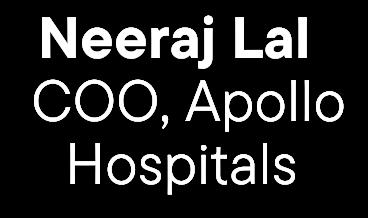





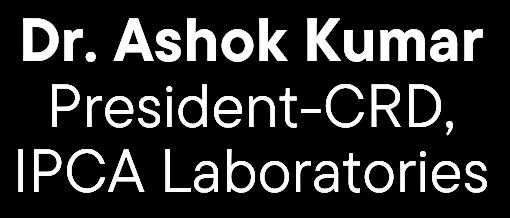












June 2024 www.CXOTechBOT.com

Insights..Innovation..Impact
Embark on an awe-inspiring voyage into the frontier of technological advancements with CXO Health TechBOT, the premier destination for health tech enthusiasts. Immerse yourself in a world of cutting-edge insights, groundbreaking innovation, and transformative impact as we unveil the boundless potential of technology.
MAGAZINE I NEWSLETTER I WEBSITE JOIN THE COMMUNITY

The CXO TechBot Team
Editor-In-Chief
Swati Gupta
Chief Strategist
Mohit Agarwal
Head of Content
Suhas Vittal
Content Editors
Suhas Vittal, Priya Sharma
Head of Technology, Delivery & Operations
Priyanka Gautam
Head of Design
Harsh Kumar
Product Marketing and Development Manager
Ajay Singh
Director of Talent and Communication Manager
Ruchika Sharma
Digital Partner
Fusionflare media
Creative Manager
Mayuree Rastogi
Web developer
Alok Bhade
Video & Production Manager
Bhawesh Mishra
Creative Co-coordinator
Umesh Tiwari
Customer Success Manager
Subha Gupta
CEO Swati Gupta
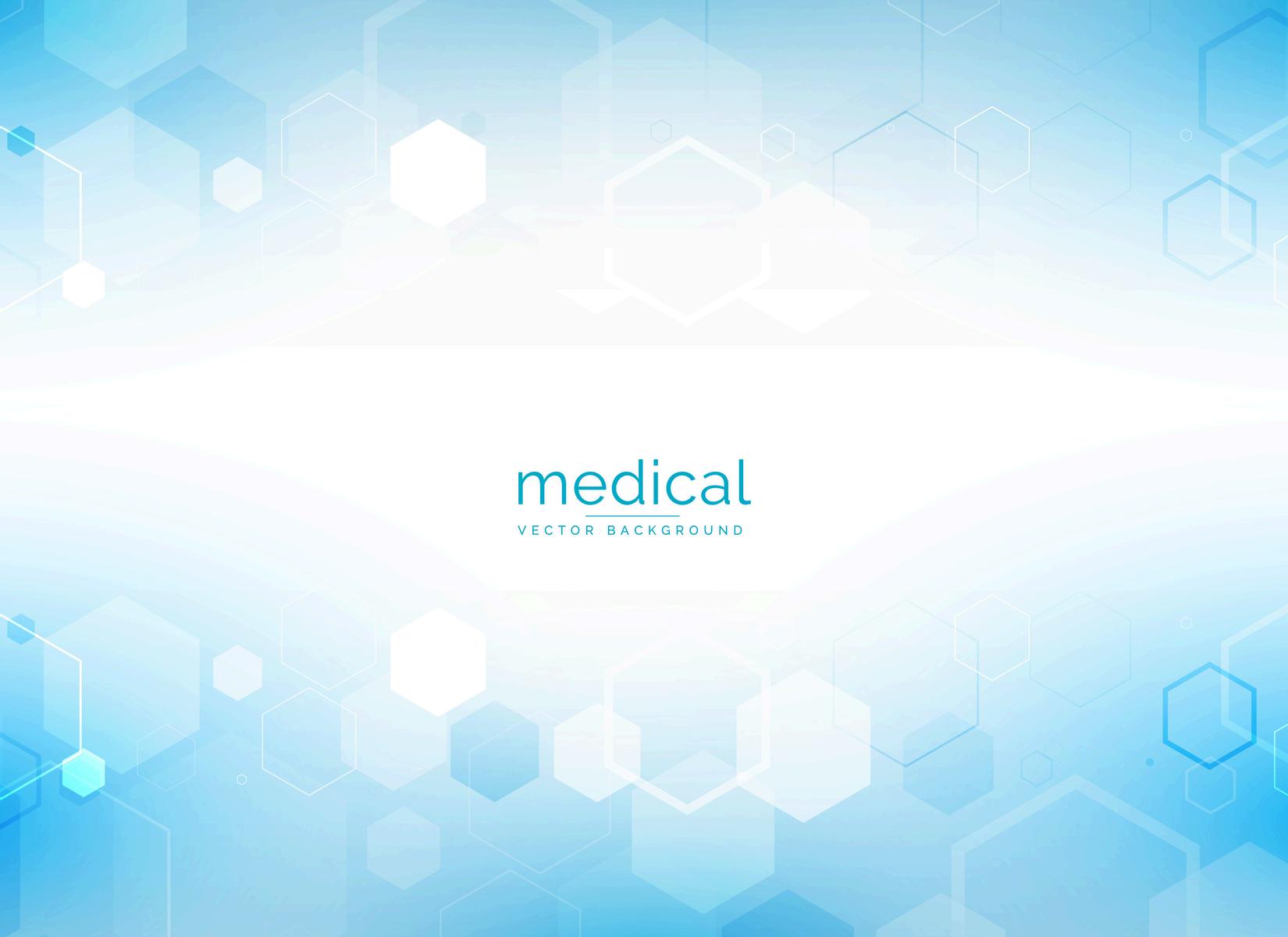

Embracing Innovation: Transforming Healthcare through Technology
In an era defined by rapid technological advancement, the healthcare industry stands at the forefront of innovation. From robotic-assisted surgeries to AI-driven diagnostics, each stride forward promises to revolutionize patient care and operational efficiency
The integration of robotics in surgery exemplifies this transformative journey, offering unprecedented precision and accelerated recovery times Meanwhile, artificial intelligence emerges as a cornerstone in scientific progress, enhancing research methodologies and treatment protocols beyond traditional human capabilities.
As we navigate these technological frontiers, cybersecurity remains paramount in safeguarding sensitive patient data amidst the surge of digital health solutions. Simultaneously, wearable health gadgets redefine patient monitoring, empowering individuals with real-time health insights.

e s k
Leadership in healthcare administration evolves with a focus on compassionate practices, ensuring that amidst technological leaps, human touch and empathy remain central to patient care. Likewise, the advent of CRISPR gene editing sparks ethical debates even as it promises revolutionary medical treatments.
Looking ahead, 3D printing and spatial computing are poised to redefine personalized healthcare delivery, offering bespoke solutions tailored to individual patient needs.
In this issue, we explore these transformative technologies and their profound impact on the healthcare landscape
Join us as we delve into the future of healthcare, where innovation meets compassion to forge a healthier world.
SWATI GUPTA CEO & Editor-in-Chief
D
E d i t o ’r s











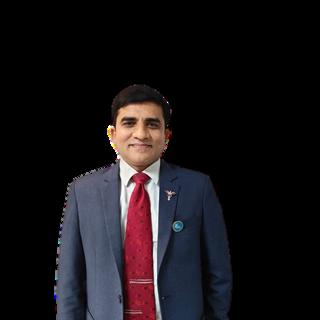


How AI is Accelerating Scientific Progress 11 Beyond Human Limits Cover Story Big Picture A CEO's Approach to Leadership Development in Healthcare 17 From Vision to Execution Leadership 27 The Healing Touch Fostering Compassionate Leadership in Healthcare Administration Sustainability 23 Green Chemistry in CRAMS A Digital Guide to Sustainable Operations 07 Robotics in Surgery Robotics Enhanced Precision and Quicker Recovery AI From Diagnosis to Management The AI Revolution in Healthcare 31 Index 31 17 27








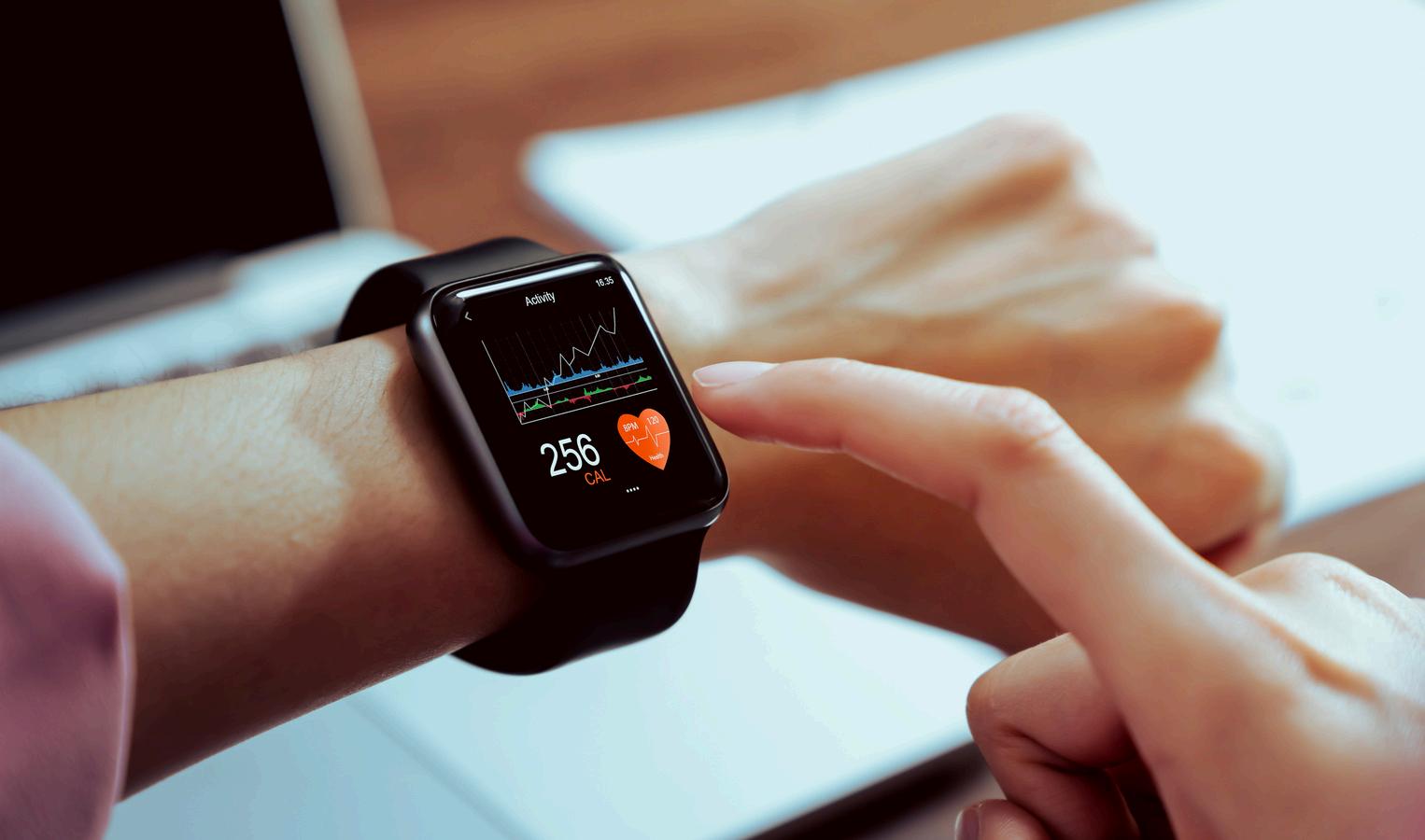




49 From Concept to Reality The Journey of MedRabbits Healthcare in Delivering Tech-Enabled Home Healthcare Services HealthTech Index 36 AI and Machine Learning The Future of Fraud Detection in Health Insurance Health Insurance Combating Threats and Protecting Patient Data 41 Cybersecurity in Healthcare Security Cutting-Edge Innovations in Patient Monitoring 46 Wearable Health Gadgets In Brief 53 The Unprecedented Surge of IT in Healthcare A Post-COVID Synopsis IT

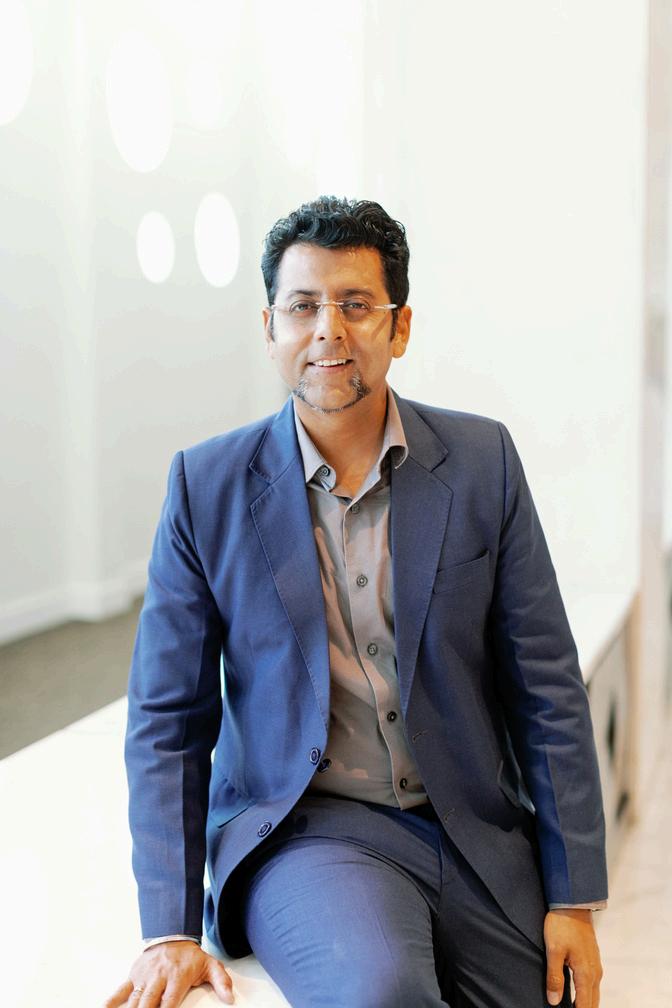





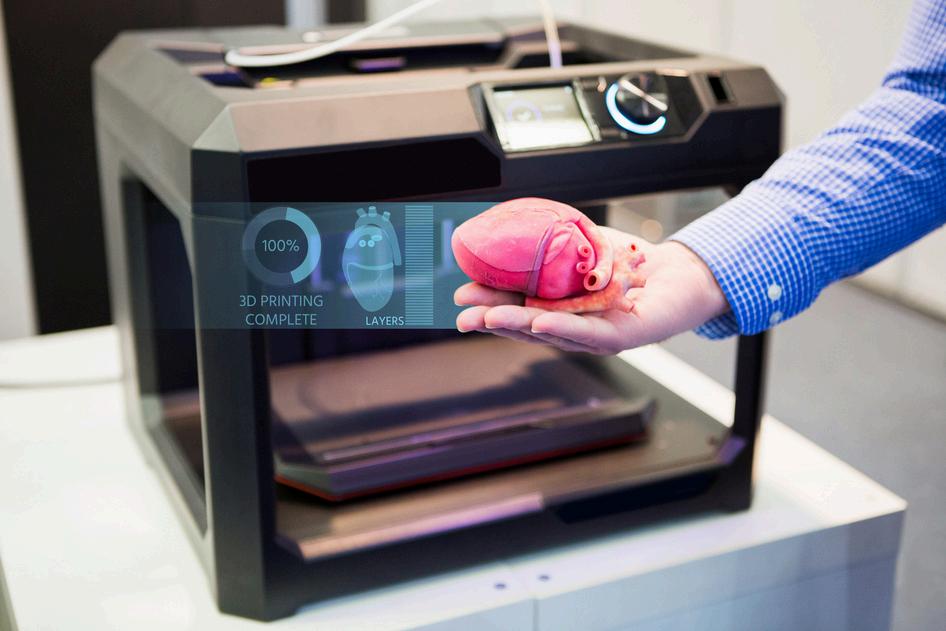


57 Transforming Patient Care Through Technology Insights from an Industry Titan Technology AI Solutions for Efficient Medical Writing and Publication 61 Enhancing Scientific Communication ViewPoint Revolutionising Medicine But Raising Ethical Questions 65 CRISPR Gene Editing CRISPR GE 68 The Future is Now Exploring Cutting-Edge Uses of 3D Printing in Healthcare 3D Health Next-Gen Senior Care Exploring the Power of Generative AI and Large Language Models 71 Gen AI Index 57
inSurgery Robotics
EnhancedPrecisionandQuickerRecovery
The world of medicine is constantly evolving, and one of the most exciting advancements is the rise of robotics in surgery Robotic surgery, often known as robot-assisted surgery, uses robotic technology to help surgeons execute less invasive treatments. This novel method has significant advantages for both surgeons and patients, including increased precision, better visualisation, and faster recovery times

Fueled by rising adoption and expanding applications, robotic-assisted surgical procedures are projected to surge from over 1 2 million performed globally in 2020 to potentially exceed 3 million annually by 2025
www CXOTechBOT com 07
KeyComponentsofRoboticSurgery
Unlike traditional surgery, which involves large incisions and direct manipulation of instruments, robotic surgery utilises a minimally invasive approach The core of the system consists of three key components:
Robotic Arms
These high-tech arms hold tiny surgical instruments and are manoeuvred by the surgeon from a specialised console. The arms offer exceptional dexterity and a wider range of motion compared to traditional laparoscopic instruments, allowing for more precise movements and minimising tissue damage
High-Definition Camera
A high-definition camera is positioned at the surgical site, providing magnified, 3D views on a monitor in the surgeon ' s console. This enhanced visualisation allows surgeons to see intricate details and perform delicate procedures with greater accuracy.
Surgeon Console
The surgeon sits comfortably at a console equipped with hand and foot controls These controls allow for intuitive manipulation of the robotic arms and camera, providing a natural and immersive experience
BenefitsofRoboticSurgeryOver TraditionalMethods
The integration of robotics in surgery offers a multitude of advantages for both surgeons and patients:
Enhanced Precision

Robotic arms provide unparalleled precision and stability compared to traditional laparoscopic instruments. The tremor filtration technology in these systems minimises any hand tremors, leading to more controlled and accurate movements. This translates to less tissue damage, a reduced risk of complications, and potentially better surgical outcomes.
Improved Visualisation
The high-definition 3D camera offers a magnified and meticulously detailed view of the surgical site This allows surgeons to visualise anatomical structures with exceptional clarity, enabling them to perform complex procedures with greater confidence and efficiency
Reduced Recovery Time
Minimally invasive robotic surgery often leads to smaller incisions, less blood loss, and minimal disruption to surrounding tissues. This translates to faster healing times, shorter hospital stays, and a quicker return to normal activities for patients.
June 2024 08
Ergonomic Advantages
Surgeons perform robotic surgery from a comfortable console, eliminating the need for prolonged periods of standing in awkward positions often associated with traditional laparoscopic techniques. This reduces physical strain and fatigue for surgeons, allowing them to maintain focus and perform intricate procedures for longer durations.
Patient satisfaction with robotic surgery is exceptionally high, with over 90% of patients experiencing positive outcomes and expedited recoveries The minimally invasive approach of robotic surgery results in smaller incisions, reduced pain, and quicker healing.
LimitationsofRoboticSurgery
While robotic surgery offers numerous advantages, it's essential to consider some limitations:
High Cost
Robotic surgical systems are expensive, and the cost of the technology can translate to higher healthcare costs
Training Requirements
Surgeons require specialised training to operate robotic systems effectively Mastering the technology and adapting surgical techniques to this new approach takes time and experience
Limited Tactile Feedback
While the camera offers excellent visualisation, surgeons may have a reduced sense of touch compared to traditional techniques. This can be a factor in certain procedures where tactile feedback is crucial
TheFutureofRoboticSurgery
Robotic surgery is swiftly revolutionising the operating room, presenting a future characterised by unmatched precision and minimally invasive techniques Propelled by advancements in artificial intelligence, surgeons are increasingly benefiting from AIpowered assistance in decision-making and the control of robotic arms. The miniaturisation of surgical instruments allows for even smaller incisions and access to previously challenging anatomical areas Enhanced haptic feedback is bridging the gap between surgeon and machine, restoring a sense of touch for more delicate procedures As robotic surgery continues to evolve and become more affordable, it is set to become the standard for numerous procedures, leading to faster patient recovery and improved overall outcomes.


www CXOTechBOT com 09


Beyond
Human Limits
How AI is Accelerating Scientific Progress


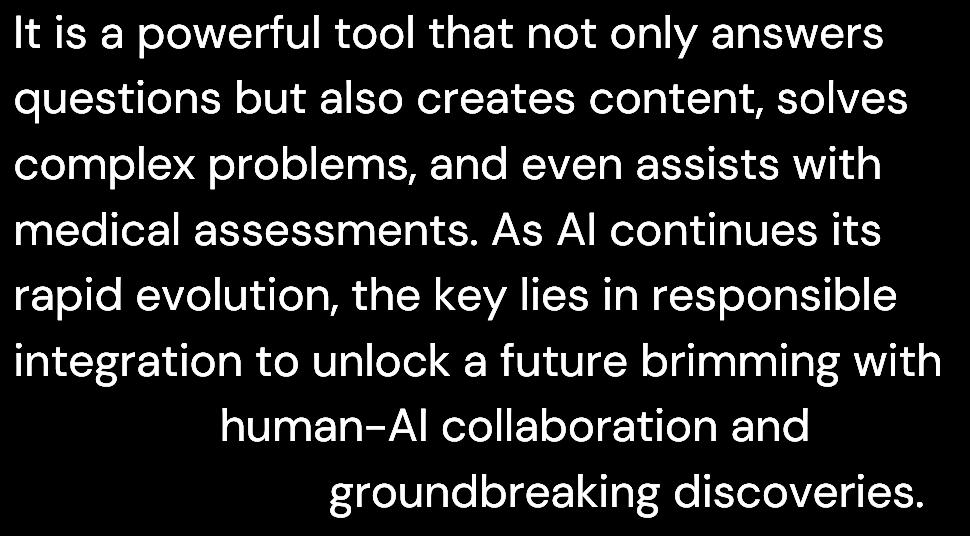
www CXOTechBOT com 11
EnhancingScientificResearch
Traditionally, people were under the impression that creative and innovative vocations, including the fine arts, science, and complicated decision-making requiring critical thinking, are exclusively human domains and will never be impacted by AI. But, in the present scenario, this theory seems to be incorrect, as exemplified by a few recent developments in chemistry and related fields
DiscoveringNewDrugs
Unlocking new drugs hinges on understanding protein structures, a historically difficult task. Here, AI is making waves in this field as well. AlphaFold, a powerful algorithm, predicts protein structures from amino acid sequences in mere hours, slashing years off the traditional method. This breakthrough opens doors for a surge in new drug targets. AlphaFold's impact extends further. When combined with other AI tools like PandOmics and Chemistry 42, it can pinpoint potential drug candidates by analysing their predicted protein structures. The synergy between AI and humans is paving the way for a revolution in drug discovery, with the potential to expedite the development of life-saving medications.
Drugdiscoveryisonthe cuspofanewera.By combininghuman expertisewithAI's capabilities,wecan acceleratethe developmentoflifesavingmedications
AshokKumar
NewDrugDevelopment
Along with drug discovery, AI is also revolutionizing drug development Beyond early-stage target identification, AI tackles lead optimization, drug property prediction, and even clinical trial design. The combination of AI and Big Data cuts costs, reduces latestage failures, and streamlines the entire process Bringing a drug to the market takes over a decade and billions of dollars. However, with AI's help, the future of drug development is much faster and more efficient Industry reports predict that within ten years, AI will be instrumental in the development of over half of all approved medications.

June 2024 12
PredictingEnzymeFunction
A new free online tool called CLEAN (contrastive learning enabled enzyme annotation) uses deep learning to analyse enzyme amino acid sequences and predict their function It helps researchers quickly identify the right enzyme for specific chemical production.
A study reports that CLEAN outperforms previous EC number annotation methods in challenges including BLASTp and state-ofthe-art ML models.
EnzymeEngineering
AI now plays a crucial role in tackling the issue of plastic pollution. An AI-designed enzyme can break down entire plastic trays in under 48 hours, significantly faster and at lower temperatures than existing methods. This innovation outperforms human-made solutions for 51 different PET products, offering a promising new approach to plastic waste management
DeNovoEnzymeDesign
Proteins have complex 3D structures, making them difficult to design However, AI is changing the game. Researchers can now use AI platforms like ColabFold to design protein sequences and predict their structure, bypassing limitations in our understanding of protein physics It opens doors for creating novel proteins with specific functions, like the curative proteins designed by the AI model CHROMA

SyntheticRouteDesign
Tools like Synthia (Merck KGAA) leverage AI and vast databases to recommend reaction pathways for complex molecules It goes beyond existing literature, suggesting novel strategies for faster and more efficient synthesis. A 2023 study reported that AIpowered tools like AstraZeneca's Synthia platform can achieve success rates of up to 80% in predicting efficient synthetic routes for complex molecules, compared to traditional methods with a success rate closer to 50%.
Similarly, IBM's ROBOT RXN predicts millions of potential reactions, accelerating the discovery of crucial chemical compounds used in drug development. These AI-powered tools are empowering chemists worldwide, with over 30,000 already utilising ROBOT RXN to streamline their work.
ReactionConditionPredictor
Human chemists are at risk of getting outperformed by AI chemists. AI robots predict optimal reaction conditions and perform experiments, achieving double the yield in Suzuki-Miyamura couplings

For other reactions, AI can analyse vast literature (e g , 62,000+ Buchwald-Hartwig reactions) to suggest reaction tweaks and prevent unwanted side effects. Labmate, another AI tool, recommends reaction conditions and even suggests further experiments to maximise yield

www CXOTechBOT com 13
EnantioselectivityPrediction
AI can be trained to determine the activation energy for the competing R and S pathways, which can then be translated to enantiomeric excess, providing remarkable results in predicting the enantioselectivity of an asymmetric transformation.
AtomTracking
AI chemists are making waves in scientific research. RXN Mapper tracks reaction atoms with over 99% accuracy, and an AI robot chemist discovered a photocatalyst six times better than human-made versions
StereospecificC-CBondFormation
Scientists have created a fully automated robotic platform that can precisely build the core component of kalkitoxin, a neurotoxin naturally produced by cyanobacteria. This innovative system allows for the controlled growth of carbon chains one atom at a time, with the ability to manipulate both chain length and stereochemistry.

Self-drivingChemistryLabs
An AI chemist, Coscientist not only plans experiments, writes codes and analyzes results but also performs complex reactions like Suzuki and Sonogashira couplings without human input Similarly, ChemCrow, an advanced chatbot, can design syntheses and operate robotic labs Given the prompt to create an insect repellent, ChemCrow autonomously produced DEET, a known repellent These AI advancements are revolutionizing chemical research

AI chemists like AlphaFlow are accelerating material discovery It explores over a trillion potential quantum dot combinations in a month, autonomously optimising reaction conditions. Innovations such as these pave the way for the faster development of new materials

Conclusion
AI is revolutionising scientific research Its incredible learning speed, data analysis, and ability to tackle complex problems unlock new insights from experiments and vast datasets. The future promises even more with self-thinking AI agents and powerful quantum computers. While AI might not replace humans entirely, those who embrace this powerful tool will be the future leaders in research. The possibilities are endless when highly developed AI merges with quantum computing, wielding the knowledge of entire scientific fields. This vision is closer to reality than we think. The key is to consider AI as a friend rather than a foe and learn to leverage its strengths alongside our unique human capabilities.
June 2024 14


President-CRD,IPCALaboratories
Dr. Ashok Kumar, a resident of Mumbai, India, is a distinguished scientist with a passion for pushing boundaries in drug discovery He holds a PhD and the prestigious title of Fellow of the Royal Society of Chemistry (FRSC)
Following his postdoctoral research with Professor Sir John Cornforth, a Nobel Laureate at the University of Sussex, Dr Kumar has co-authored over 35 peer-reviewed publications in international journals and co-invented over 100 patents. Since September 2005, he has led the charge as President of the research and development centre at IPCA Laboratories Limited.
Dr Kumar's philosophy, inspired by Richard Feynman, is to "Study what interests the most in the most undisciplined, irrelevant & original manner possible and think what others have not thought." This approach fuels his expertise in new drug discovery, biotech/biosimilar R&D, intellectual property creation, and innovative process research within the field of chemistry
A captivating motivational speaker, Dr. Kumar has received numerous awards and delivered countless talks, sharing his knowledge and igniting curiosity within the scientific community
www CXOTechBOT com 15
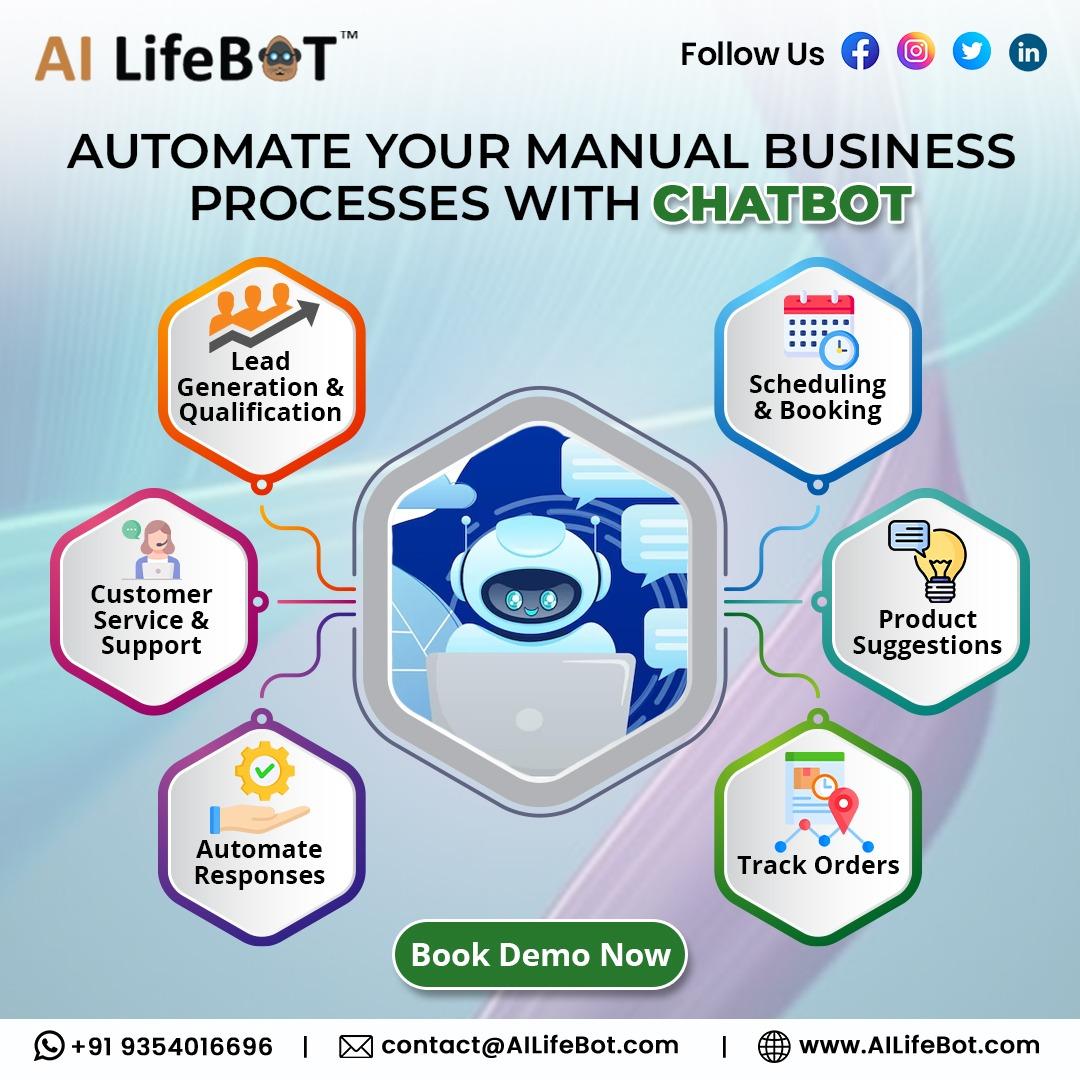

A unit of Edgespark IT Ventures Pvt Ltd. WeWork India, Chromium, Cts No. 106/1-5, Jogesh Wari-Vikhroli link Road, Milind Nagar, Powai, Mumbai - 400076. Mumbai | Pune | Noida contact@cxotechbot.com +91 7304 67 0468 ADVERTISE WITH US
From Vision to Execution
A CEO's Approach to Leadership Development in Healthcare
The healthcare industry is a complex field with ever-evolving dynamics Leaders in this sector face numerous challenges, such as ensuring patient safety and satisfaction, managing financial constraints, and adapting to technological advancements However, at the heart of these challenges lies a shared goal: to provide exceptional care This exploration delves into


At the heart of effective leadership lies a welldefined strategic vision. It serves as a guiding light, outlining the organisation's desired future and the path to achieving it However, in the healthcare sector, a successful vision goes beyond financial goals; it prioritises the well-being of patients


BuildingaStrategicVisionwitha Patient-CentricFocus www CXOTechBOT com 17
Developing this vision requires a leader to possess a deep understanding of the community, the healthcare landscape, and current market trends. Data analysis is crucial, allowing leaders to identify unmet needs, emerging technologies, and potential growth opportunities.
For example, at Ratan Jyoti Group of Hospitals (RJGH), recognising the growing demand for super-specialty services, a targeted hiring strategy to recruit renowned doctors in these areas was implemented This strategic direction not only bolstered RJGH’s clinical capabilities but also attracted a wider patient base seeking specialised treatment
However, a vision remains just an idea without a strategic roadmap Effective leaders break down their vision into actionable steps, aligning them with the organisation's mission and values This includes setting measurable goals, allocating resources effectively, and establishing performance metrics to track progress
BuildingTrustThroughContinuous Improvement
Patients entrust their health and well-being to healthcare institutions, making it imperative that leaders prioritise quality and safety It translates to a relentless pursuit of continuous improvement, ensuring that patients receive the highest standards of care
Actively pursuing accreditation by esteemed bodies like NABH (National Accreditation Board for Hospitals and Healthcare Providers) is a powerful way to demonstrate this commitment to quality The accreditation process itself becomes a valuable exercise, prompting a thorough review of protocols, risk management strategies, and staff training programmes
The commitment goes beyond accreditation itself Leaders must cultivate a culture of continuous improvement within their organisations by encouraging open communication, soliciting feedback from staff and patients, and readily implementing best practices. At RJGH, embracing this approach has led to a significant elevation in patient care standards across the hospitals, solidifying the group’s reputation for excellence.


June 2024 18
InvestinginTalentandBuildinga Future-ReadyWorkforce
A healthcare organisation is only as strong as its people. Leadership success hinges on attracting, retaining, and nurturing a skilled and dedicated workforce Here, talent acquisition plays a vital role. Targeted strategies are necessary to attract top professionals, particularly in critical specialties It can involve competitive compensation packages, a healthy work environment, and opportunities for professional development
But leadership development goes beyond attracting talent; it's about empowering existing staff and building a pipeline for future leaders. Mentorship programmes, leadership training initiatives, and succession planning strategies ensure that knowledge and expertise are not only retained but also passed on to future generations.
Lotsoftalentedyoung peoplearejoiningthe excitingfieldof healthcarethesedays. Tokeepyour organisationontop,you needagreatplantofind andhirethebestof them
MukeshSabharwa
The healthcare landscape is constantly evolving, with new technologies and treatment methods emerging at a rapid pace. Leaders who foster a culture of collaboration and innovation can harness these advancements to deliver superior patient care.
Creating an environment where the staff feel comfortable sharing ideas, experimenting with new approaches, and learning from each other unlocks innovation potential This can involve regular brainstorming sessions, interdepartmental collaboration on projects, and rewarding innovative solutions
Furthermore, fostering strong relationships with academic institutions and research centres provides access to cutting-edge knowledge and opportunities for participation in clinical trials Such collaborations can position an organisation at the forefront of medical advancements and attract patients seeking the latest treatments.

www CXOTechBOT com 19
FosteringCollaborationandaCulture ofInnovation
NavigatingChallengeswithStrength andAdaptability
The healthcare environment is not without its challenges. Unexpected outbreaks, economic downturns, and technological disruptions can pose significant threats to an organisation's stability. Effective leadership demands resilience, adaptability, and a willingness to navigate uncharted territory
Crisis management skills are crucial in these situations Clear communication, decisive action, and a commitment to employee wellbeing are essential for weathering these storms. The ability to adapt strategies, restructure operations, and leverage technology can help organisations emerge stronger and more resilient.
Here, the experience of leading the Asian Heart Institute through the COVID-19 pandemic serves as a powerful example The unforeseen challenges forced a significant restructuring of operations and a reallocation of talent. However, by implementing strategic initiatives and fostering a culture of collaboration, the institute not only survived but also emerged stronger than ever before. This experience exemplifies the importance of remaining agile and adaptable in the face of adversity.
Conclusion:LeadingtheWayin HealthcareDelivery
Leading a healthcare organisation is a privilege, but it also comes with immense responsibility. By prioritising a patient-centric vision, championing quality and accreditation, fostering a talented and future-ready workforce, encouraging collaboration and innovation, and leading with resilience, healthcare leaders can build a culture of excellence that not only benefits the organisation but also elevates the quality of care delivered to patients
The healthcare landscape demands continuous learning and adaptation However, by embracing a growth mindset and a commitment to excellence, leaders can guide their organisations towards a brighter future, ensuring that everyone has access to the high-quality healthcare they deserve. Ultimately, a leader's legacy is not just about the success of their own organisation but also about the contribution they make to a stronger and more accessible healthcare ecosystem for all
A dream written down with a date becomes a goal. A goal broken down into steps becomes a plan. A plan backed by action makes your dreams come true





June 2024 20

Mukesh Sabharwal

GroupCEO,RatanJyotiGroupofHospitals
Mr. Mukesh career exemplifies transformative leadership. Since 2021, he has steered Ratan Jyoti Group of Hospitals (RJGH) to new heights, managing a diverse portfolio of institutions with remarkable vision and strategic acumen
His leadership has resulted in significant growth for RJN Apollo Spectra Hospitals, Ratan Jyoti Dalmia Heart, and Ratan Jyoti Netralaya, solidifying their market share and revenue Beyond his role at RJGH, Mukesh also serves as a business coach and advisor to Kinder Hospital.
A champion for quality, Mr Mukesh spear headed JCI at Asian Heard institute & NABH accreditation efforts across RJGH, demonstrating his unwavering commitment to patient safety and the highest standards of care.
When we decide to do something, whether that’s to start exercising, eating healthier or creating a more purposeful life – we have a tendency to get a bit too excited. *At first, our goals thrill us.* That’s also when we start being overly ambitious about what we can accomplish. Then, when we’re having a bad day our plan can feel rather overwhelming *What most people do then is to quit * The idea isn’t to run a sprint – but a marathon. To focus on consistency, instead of intensity. *So, take baby steps forward that you know you can keep.* Better to beat your target than to fall before the finish line.
www CXOTechBOT com 21

SkillzzaJob SimulationProgram







CallNow +91 9136961978 VisitWebsite www.skillzza.com
Green Chemistry
inCRAMS
ADigitalGuideto SustainableOperations
In the current environment, maintaining ecologically friendly activities is no longer an option; it is a necessity. This is especially important for CRAMS operations (Cleaning, Rinsing, Acidizing, Maturing, and Stabilising), which traditionally use powerful chemicals. A 2020 research by the National Academies of Sciences, Engineering, and Medicine discovered that industrial cleaning

procedures, which include parts of CRAMS, contribute significantly to hazardous waste creation and water pollution, emphasising the importance of CRAMS adopting sustainability measures.
However, a positive shift is on the horizon: by combining green chemistry principles with digital breakthroughs, CRAMS operations can usher in a new era of sustainability





www CXOTechBOT com 23
UnderstandingtheConceptofGreen Chemistry
Green chemistry encompasses the development of chemical products and processes aimed at reducing or eliminating the use of hazardous substances It addresses challenges by formulating novel reactions that enhance the yield of desired products while minimising the generation of byproducts Additionally, green chemistry focuses on designing innovative synthetic pathways to streamline chemical production and seeks the use of environmentally and ecologically benign solvents. This field involves the strategic reduction or elimination of hazardous compounds throughout the design, manufacturing, and application stages of chemical products.
Green chemistry refers to a set of principles that guide professional chemists in developing novel chemical substances, synthesis methods, and technological processes. These principles include:
Prevention
Minimising waste generation by using less hazardous materials.
DigitalTransformation:TheKey Enabler.
While green chemistry principles serve as the foundation, digital technologies are essential for successful application. Here's how.
Data-Driven Decision Making
Digital systems can gather and evaluate information about chemical usage, waste generation, and CRAMS efficiency This data can then be used to identify potential green chemical interventions
Process Simulation
Digital simulations can show how different green chemistry approaches affect CRAMS operations, allowing for more informed decision-making before making modifications.
Automated Optimization
Digital systems can automate CRAMS processes by optimising parameters such as temperature, pressure, and chemical concentrations to reduce waste and increase efficiency.
Supply Chain Transparency
Safer Synthesis
Designing safer chemical reactions that reduce risks and pollution
Digital tools can increase supply chain transparency, allowing CRAMS operations to purchase environmentally friendly chemicals from responsible manufacturers.
Safer Solvents
Utilising less toxic and more benign solvents.
Biodegradability
Developing chemicals that readily break down in the environment
Renewable Feedstocks
Using renewable resources instead of finite ones






June 2024 24
ImplementingGreenChemistryin CRAMSOperations
A survey conducted in 2022 revealed that over 70% of CRAMS companies have integrated at least some green chemistry principles into their operations, with 40% planning to increase their green chemistry investments in the next five years.
Inventories Management
Using digital tools to track and manage chemical inventories results in more effective use and less waste
Substitution Database
Creating a database of greener alternatives to commonly used chemicals in CRAMS allows for simple substitution.
Safety Data Sheets (SDS) Management
Using digital SDS management solutions to ensure that employees have access to the most recent safety information about green chemicals.
Performance Monitoring
Using digital dashboards to monitor critical parameters like chemical consumption, waste generation, and CRAMS efficiency
These dashboards help demonstrate the effectiveness of green chemistry programmes
Conclusion
CRAMS operations can unlock a future defined by sustainability by embracing green chemistry principles and leveraging the power of digital transformation. This transformative journey necessitates a collaborative effort between chemists, engineers, and digital specialists.
Chemists will play a crucial role in identifying and implementing greener alternatives. Engineers will be responsible for adapting CRAMS processes to accommodate these changes, ensuring optimal efficiency and safety. Digital specialists will be instrumental in developing and utilising data-driven tools to monitor progress, optimise operations, and measure environmental impact.

CRAMS operations have the potential to become a model for environmental responsibility, demonstrating a commitment to minimising environmental impact while achieving operational excellence
www CXOTechBOT com 25


Unmatched science reporting
Immerse in breathtaking celestial images
Master the skies with complete coverage and observing tips


Introducing
Embark on a Journey of Discovery! Dive deep into exclusive interviews with scientists and astronauts, gaining insights into the mysteries of the cosmos. Join us today at www.cxotechbot.com and prepare for liftoff…
your fascination with the universe and embark on an interstellar adventure with Space TechBot, the ultimate digital magazine for space enthusiasts like you! UNVEIL THE UNIVERSE Become a part of this celestial Journey!! Explore the cosmos like never before! COMING SOON
Fuel
The HealingTouch


FosteringCompassionateLeadershipin
In healthcare, emotional intelligence is as critical as clinical knowledge Leaders who exhibit compassion understand that their attitudes and decisions can significantly affect the mental and physical well-being of both patients and staff This sensitivity promotes a more holistic approach to care where psychological comfort is considered alongside physical treatment.
This, in turn, can lead to improved job satisfaction, lower turnover rates, and a more dedicated workforce According to a survey, organisations with empathetic leadership report higher job satisfaction. This approach helps develop a workplace that does more than function it thrives, and promotes healing and growth. Leaders ensure that the healthcare setting evolves from a mere place

HealthcareAdministration
www CXOTechBOT com 27
TransformativeEncountersof Compassion
At 23, a young man faced a grave challenge following a severe accident on November 25, 2022 in Surat. It led to extensive surgeries, leaving him bedridden and struggling, despite months of care His fate turned upon entering Apollo Hospitals Ahmedabad Here, a compassionate spine surgeon discovered and treated a Dural Cyst, though the young man soon needed further surgery for an Arachnoid Cyst Amidst his despair, support from his disabled brother provided a pillar of strength Additionally, an act of kindness from the nursing staff organising a pilgrimage to the Hanuman Temple in Sarangpur on his behalf rekindled his hope This gesture of deep empathy lifted his spirits and marked Apollo Hospitals as a true sanctuary of compassion. This incident illustrates the sincere impact of heartfelt, supportive care
CultivatingResilienceinAdversity
PromotingRecoverythrough Empathy
A three-year-old boy, the son of hardworking farmers, faced a severe challenge when he accidentally tipped a boiling pot of water over himself This incident tested his resilience and spirit profoundly After enduring nine tough days, he was moved to a ward where the affectionate bond with his grandmother helped buoy his spirits The hospital staff, touched by his courage, creatively eased his treatment process with chocolates and currency notes, transforming daunting medical procedures into moments of joy The boy even playfully insisted on counting the money himself before each dressing, engaging actively in his recovery process As he healed, his family prepared for his discharge, overflowing with gratitude for the Apollo Hospital team’s compassionate care This blend of personal attention and medical expertise turned a potential tragedy into a triumphant recovery, illustrating the profound impact of empathetic healthcare











June 2024 28

CelebratingTheHumanSpirit
In Telangana, a 21-year-old college student encountered a formidable challenge blood cancer With a diagnosis of Chronic Myeloid Leukaemia and complications like hyperleukocytosis, a severe white blood cell elevation, and a brain lesion, he faced a battle on multiple fronts.
Admitted to Apollo Hospital in Ahmedabad, the medical team, comprising specialists from the Bone Marrow Transplant and Hematooncology units, launched a comprehensive, multidisciplinary treatment strategy Their concerted efforts included leukapheresis to improve blood flow, intensive anticancer treatments, blood transfusions, and ventilatory support. A crucial craniotomy surgery was performed to alleviate brain pressure This pushed him through coagulation issues, infections, and pneumothorax.
The dedicated care and advanced medical interventions paid off The young man overcame his condition. His cancer is now under control, his consciousness regained, and major symptoms like seizures and infections resolved Now back home, his journey of recovery continues, supported by his family's gratitude towards the medical team and the Gujarat Government's assistance. This story celebrates the unyielding human spirit's capacity to triumph over life's harshest trials
TheFar-ReachingImpactof CompassionateLeadership
These narratives reflect the broader implications of compassionate leadership in healthcare Leaders in healthcare settings can inspire loyalty and dedication among their teams by prioritising empathy, patientcentred care, and staff support
Moreover, such leadership promotes a culture where innovation in patient care is encouraged – it leads to better outcomes and more efficient healthcare delivery.
StrategicandEthicalDecision-Making
True compassionate leadership also involves making strategic decisions that align with ethical standards of care This means balancing the operational demands of a healthcare facility with the essential need to provide patient-centred care Such decisions are guided by a commitment to the welfare of the patients, which in turn, reinforces the trust and credibility of the healthcare institution in the community
ACalltoAction
The stories of these individuals highlight the healing power of compassionate leadership in healthcare
Each narrative reveals how empathetic actions by healthcare professionals can transform patient experiences and turn healthcare facilities from places of clinical intervention into sanctuaries of healing and hope The healthcare industry continues to evolve and the need for leaders who can and promote such compassion becomes ever more crucial It is through such leadership that healthcare truly makes every encounter a potential moment of comfort and recovery. This approach ensures better health outcomes and strengthens the fabric of our healthcare systems – making them more responsive, humane, and effective
www CXOTechBOT com 29
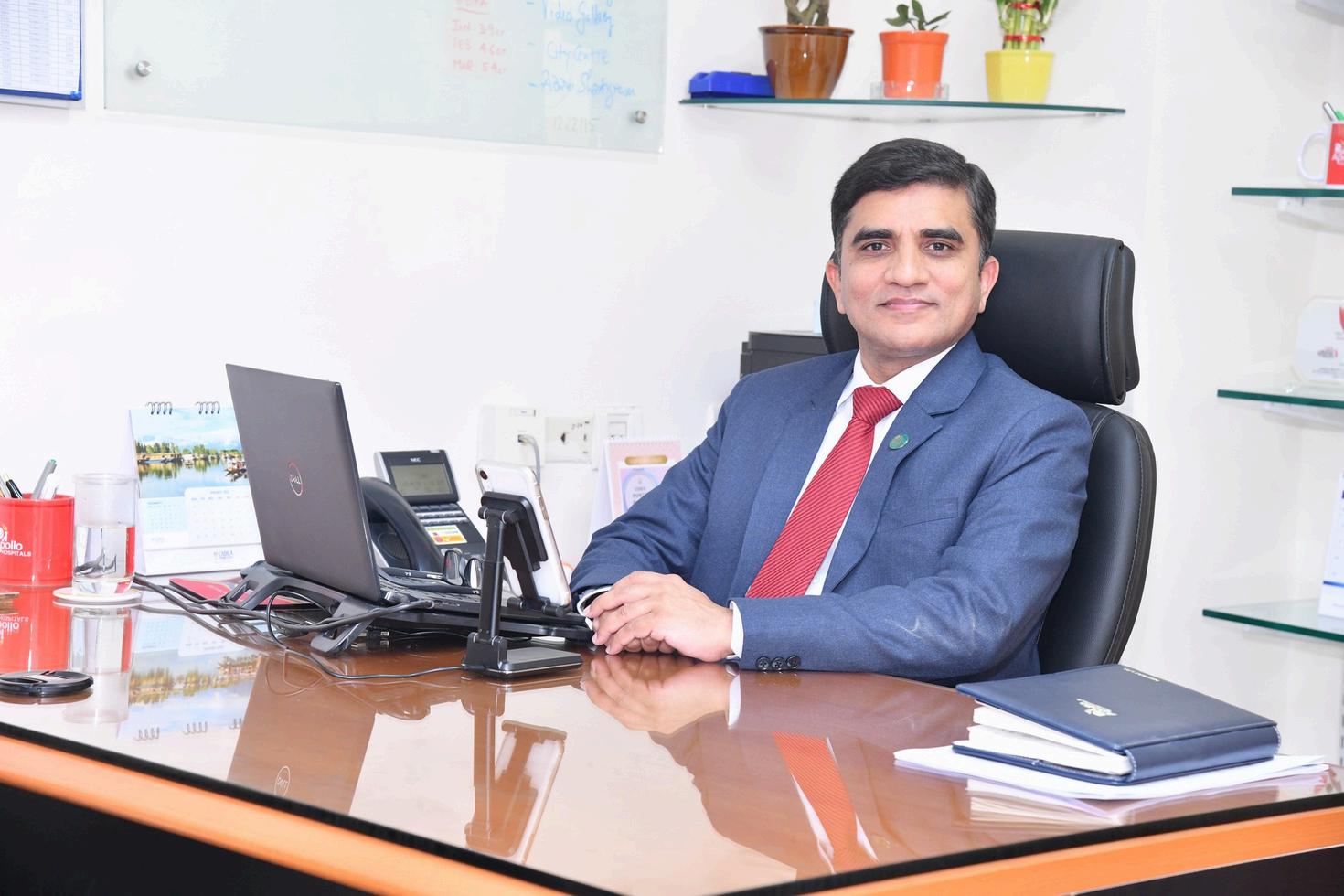
Neeraj Lal
ChiefOperatingOfficer,ApolloHospitals
With over two decades of experience in healthcare management, Mr. Neeraj Lal is currently serving as the Chief Operating Officer of Apollo Hospitals in the Gujarat Region and the President of the AHPI Gujarat Chapter He holds a Master's degree in Hospital Administration from the Tata Institute of Social Sciences (TISS), Mumbai, and a degree in Medical Sciences from the Postgraduate Institute of Medical Education and Research (PGI), Chandigarh, where he was awarded the Aikat Memorial Gold Medal for Best Outgoing Student in 1996 Mr Neeraj Lal is an expert in operations, strategy, and quality, and is an ISQua-approved surveyor. Additionally, he serves on the Board of Advisory for the MBA (Hospital & Healthcare Management) program at the Indian Institute of Management (IIM) Bodh Gaya and the MBA Healthcare Management program at Narsee Monjee Institute of Management Studies (NMIMS), Mumbai He is also a Certified Assessor for Assisted Reproductive Technology (ART) centres accreditation and the Advanced & Primary Stroke Center Accreditation Program by the Quality and Accreditation Institute (QAI) Mr Neeraj Lal has held senior positions in various prominent Indian hospitals, focusing on business development and P&L growth, including Medicover Hospitals, Rainbow Children’s Hospitals, BAPS Hospitals, Sunshine Global Hospitals, Shalby Hospitals, and Sterling Hospitals. Moreover, he shares his expertise as a guest faculty member in hospital administration and healthcare quality at several Indian universities and business schools
June 2024 30

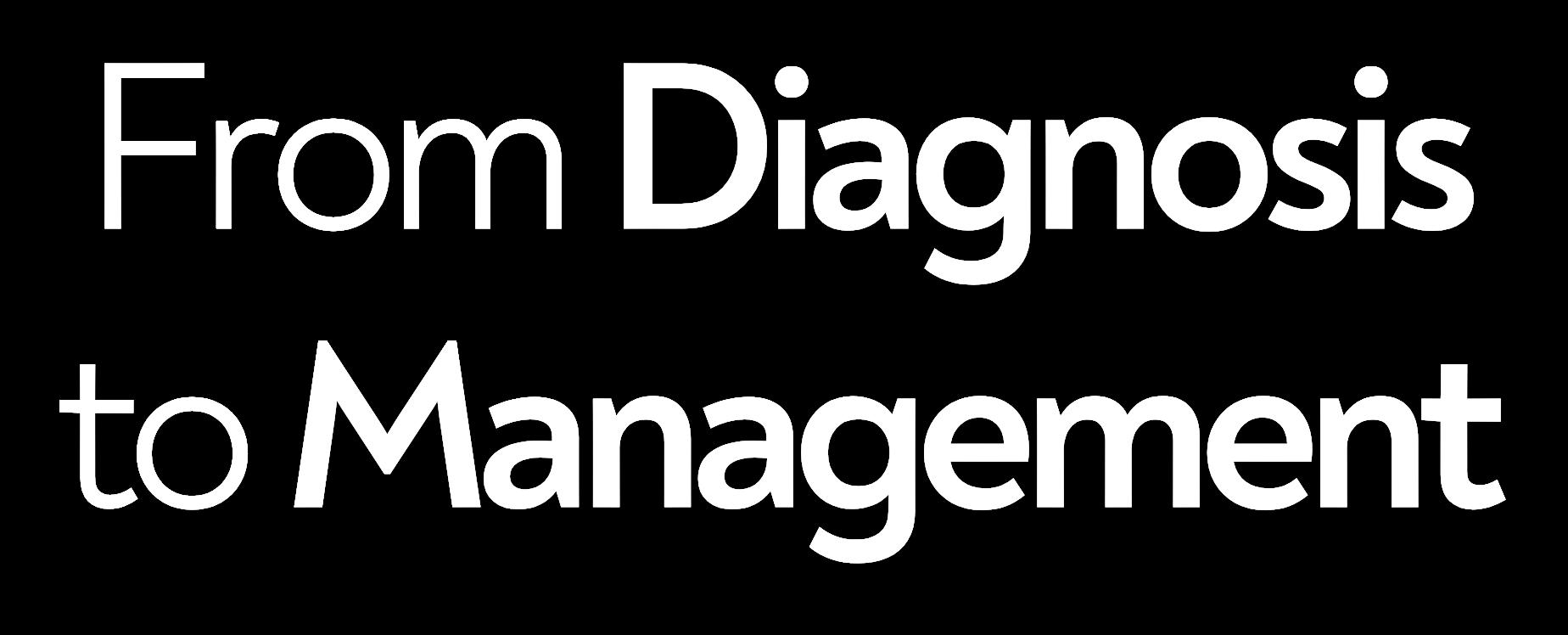
The AI Revolution in Healthcare
The integration of Artificial Intelligence (AI) into healthcare is revolutionising the industry, from diagnosis to management This transformation promises a future where medical care is faster, more accurate, and more accessible. It addresses pressing challenges such as the scarcity of medical professionals, rising healthcare costs, and the need for personalised treatment plans
CurrentSituation
India is experiencing a remarkable surge in AIdriven healthcare applications, spanning from diagnosis to treatment and beyond Recent statistics project that the Indian healthcare AI market will soar to US$1.6 billion by 2025, demonstrating a staggering Compound Annual Growth Rate (CAGR) of 40 5% from 2020 to 2025. (source)
www CXOTechBOT com 31
EnhancingDiagnosticAccuracy
AI algorithms, particularly those utilising machine learning and deep learning, are significantly augmenting diagnostic accuracy. These systems can scrutinise medical images such as X-rays, MRIs, and CT scans with a precision often surpassing that of human radiologists For instance, AI has been employed to detect early signs of conditions like cancer, diabetic retinopathy, and cardiovascular diseases, facilitating earlier interventions and improving patient outcomes.
StreamliningClinicalWorkflows
Beyond diagnostics, AI is revolutionising clinical workflows Natural language processing (NLP) enables the efficient extraction of pertinent information from electronic health records (EHRs), reducing the administrative burden on healthcare providers and allowing them to focus more on patient care. AI-driven tools can also schedule appointments, manage patient flow, and predict patient no-shows, optimising the use of resources and enhancing patient satisfaction
PredictiveAnalyticsfor ProactiveCare
Leveraging predictive analytics through Artificial Intelligence (AI) for early detection is an invaluable asset for targeted public health interventions, particularly in settings with limited healthcare capacity and delayed disease detection capabilities outside urban centres AI-enabled tools present significant opportunities to bridge these disparities and advance towards AI maturity in India's healthcare market
ExpandingAIApplicationsin Healthcare
Similar advancements are taking place in oncology. Tata Medical Center and the Indian Institute of Technology recently launched India’s first de-identified cancer image bank: the Comprehensive Archive of Imaging. AIbased tools can leverage high-quality deidentified images to train machine learning models to detect biomarkers, thereby improving outcomes in cancer research.


June 2024 32
In the realm of cardiovascular healthcare, a significant and unique challenge for India, Microsoft’s AI Network for Healthcare and Apollo Hospitals are collaborating to develop a machine learning model aimed at betterpredicting heart attack risk By utilising clinical and lab data from over 400,000 patients, the AI solution can identify novel risk factors and provide a heart risk score to patients without requiring a detailed health check-up, facilitating early disease detection and intervention
TheGrowthPotentialofAIin Healthcare
AI expenditure in India surged by over 109% in 2018, reaching $665 million, and is projected to escalate to $11.78 billion by 2025, potentially contributing $1 trillion to India’s economy by 2035. (source)
Embracingthe transformativepowerof AIinhealthcareisabout securingahealthier, moreprosperousfuture forall.ByscalingupAI integrationresponsibly, withafocuson meaningfulhuman controlandinformed consent,wepavethe waytowardsnotjust medicalinnovation,but economicprosperityand improvedwell-beingfor generationstocome.
NITI Aayog, a prominent public policy thinktank associated with the Indian government, has been exploring the application of AI in primary care for the early detection of diabetes complications Additionally, it is currently validating the use of AI as a screening tool in eye care by comparing its diagnostic accuracy with that of retina specialists. By integrating AI capabilities with portable screening devices, such as 3Nethra, India can significantly expand its capacity for eye screenings and early detection, thereby enhancing accessibility to healthcare services in remote areas countrywide
ResponsibleAIIntegrationin Healthcare
Realising the economic potential of AI in healthcare requires vigilant risk management to safeguard patient well-being. Fragmented data availability poses risks, potentially leading to errors in diagnosis and treatment Data accessibility must align with informed patient consent, ensuring awareness of AI model usage and treatment decision factors, which is crucial in India's context of limited physician-patient interaction. Balancing automation with human oversight in disease detection is vital to prevent overreliance on AI tools and maintain investments in healthcare infrastructure.
 BrijendraSingh
BrijendraSingh
www CXOTechBOT com 33
AI should augment, not replace, healthcare decision-making, with mechanisms for physician feedback and continuous improvement loops to mitigate risks. Integration of AI into healthcare must align with the goal of universal health coverage, ensuring it complements increased healthcare spending and benefits rural and peripheral populations
Workforce and Data Literacy Expansion

The government must foster public-private partnerships across the healthcare industry to facilitate collaboration between academia, government, industry, NGOs, and patient advocacy organisations. Scaling governance and regulatory mechanisms is essential to provide appropriate oversight for privacy, fairness, and transparency.
Principles of AI Integration
NITI Aayog’s National Strategy for AI prioritises principles of privacy, ethics, security, fairness, transparency, and accountability, aligning with the rights afforded by the Indian Constitution. As a founding member of the Global Partnership on AI alliance, India advocates a measured approach to AI integration, emphasising ethical and responsible standards These principles must guide practical implementation as the technology scales.
Human-Centric Design
How AI systems are integrated is crucial. Human-in-the-loop and human-centric designs empower healthcare staff to comprehend how decisions are made and incorporate this knowledge into treatment protocols, minimising risks and ensuring patient safety GovernmentInitiativesand Partnerships
Investments in expanding the healthcare workforce and enhancing data literacy are imperative. An informed workforce capable of leveraging AI in healthcare will drive innovation and ensure effective implementation India's measured adoption of AI technology can bridge rural-urban disparities, positioning the country as a leader among emerging markets in achieving the Sustainable Development Goals while leaving no one behind.


June 2024 34


Brijendra Singh
VerticalHeadandSr.Vicepresident(salesandmarketing),LupinGlobal
Mr. Brijendra Singh is the Vertical Head and Vice President of Sales and Marketing for the, Diabetes care , Onrise, Inspire Metabolic, Metacare, Nepal business,Synox and OphthalmologyTeams at Lupin Limited, a multinational an innovation led transnational pharmaceutical company With over four decades of expertise in the pharmaceutical industry, Mr. Singh has played a pivotal role in driving the success of Lupin's Diabetes and Cardiology and Ophthalmology portfolio. Under his leadership, Lupin's Diabetes Business has attained the prestigious no 3 rank in Sales, reflecting his strategic acumen and commitment to excellence
Mr Singh's journey in the pharmaceutical domain began as a Medical Sales Representative at Montari Laboratories, a Ranbaxy Ltd subsidiary, where he laid the foundation for his illustrious career He swiftly ascended the ranks, holding key positions such as Regional Sales Manager, National Sales Manager, and Deputy General Manager of Sales across various divisions. Notably, his tenure as National Sales Manager saw the launch and remarkable growth of Lupin's Diabetes Business, now a frontrunner in the Indian pharmaceutical market aiming to become 2nd big player in the field of Diabetes and Metabolic disease solution provider in therapy and Patient support programs. With a Master's degree in Zoology from Dr B R Ambedkar University, Agra, Mr Singh's expertise extends beyond sales and marketing to encompass strategic planning, product launch, business development, and exemplary leadership in product marketing and business management. Mr. Brijendra Singh’s unwavering commitment to excellence and transformative impact continues to shape Lupin's trajectory and drive innovation in the pharmaceutical landscape
www CXOTechBOT com 35
AI and Machine Learning
The Future of Fraud Detection in Health Insurance
Health insurance fraud is an alarming problem for insurance companies and the healthcare system, resulting in financial losses and decreased efficiency
Traditional approaches for detecting such fraud are often slow, reactive, and require significant manual work. However, artificial intelligence (AI) and machine learning (ML) are emerging as transformative tools capable of revolutionising health insurance fraud detection and prevention.
This breakthrough in technology allows for a more proactive and efficient approach to ensuring the integrity of the healthcare system
IBM's Cost of a Data Breach Report 2023 found that enterprises that actively deploy security AI and automation save an average of USD 1.76 million compared to those that do not.

June 2024 36
UnderstandingAIandMachine LearninginFraudDetection
Artificial intelligence (AI) is the development of intelligent systems that can mimic human cognitive functions like learning, reasoning, and problem-solving. Machine learning (ML), a subfield of artificial intelligence, uses algorithms that learn from large datasets to discover patterns and make predictions without explicit programming.
In the case of healthcare fraud detection, AI/ML systems use enormous datasets of historical claims data, including medical records, provider information, and intricate billing details. By evaluating this data, algorithms can detect anomalies and odd trends that may indicate fraudulent behaviour For example, an AI system may detect claims with excessively high costs for certain services, duplicate billing for identical treatments on the same day, or discrepancies in patient information This ability to examine complicated data points and detect minor red flags positions AI/ML to be a significant tool in the battle against healthcare fraud.

AIandMLusherinanew eraofhealthcare security,fostering collaborationinthefight againstfraud
DrAbhijeetVikramGhosh
AI and ML offer several key advantages over traditional methods of fraud detection:
Real-time Analysis
AI and ML can instantly analyse massive datasets, pinpointing suspicious activity in real time. This eliminates delays compared to manual reviews
Predictive Power
ML algorithms learn from past data to predict future fraud This proactive approach allows healthcare organisations to take preventive measures and prevent fraud before it occurs.
Advanced Anomaly Detection
AI/ML goes beyond traditional methods by analysing complex data points like unusual billing practices, geographical inconsistencies, and provider behaviour patterns, identifying red flags that might indicate fraud.
HowAIandMLRevolutioniseHealth InsuranceFraudDetection
www CXOTechBOT com 37
Automated Claim Review
AI automates claim review, flagging high-risk claims for further investigation. This frees up human investigators to focus on complex cases and develop more effective investigative strategies.
Improved Efficiency and Accuracy
AI/ML automates many of the tedious and time-consuming tasks associated with traditional fraud detection, allowing investigators to work more efficiently Additionally, AI/ML algorithms can detect fraud with greater accuracy than human reviewers, reducing both false positives (denying legitimate claims) and false negatives (missing fraudulent claims).
According to a 2021 poll conducted by the Healthcare Information and Management Systems Society (HIMSS), more than 70% of health insurance companies are now employing or planning to implement AI and ML technologies for fraud detection and prevention
This shift empowers healthcare stakeholders to proactively combat fraud, save valuable resources, and ensure a more sustainable healthcare system.
The implementation of AI and ML in healthcare fraud detection offers significant benefits for all stakeholders involved:
Reduced healthcare costs
By minimising fraudulent claims, AI/ML can help lower overall healthcare costs for insurance companies, which ultimately translates to lower premiums for policyholders
Improved Efficiency
Automating claim review and focusing resources on high-risk cases saves healthcare organisations and insurance companies time and money
Faster detection and prevention
Real-time analysis and predictive capabilities allow for earlier intervention and prevention of fraud, minimising financial losses.
Enhanced security and compliance
AI/ML can identify potential security breaches and assist in compliance with healthcare regulations related to fraud detection

BenefitsofAIandMLinHealth InsuranceFraudDetection June 2024 38
ChallengesandConsiderationsforAI andMLAdoption
Despite the numerous benefits, implementing AI and ML in healthcare fraud detection presents certain challenges By addressing these, stakeholders can leverage the full potential of AI and ML to combat healthcare fraud
Data quality and security
The effectiveness of these models hinges on the quality and security of the training data Inconsistent or inaccurate data leads to biased models and inaccurate fraud detection Ensuring data integrity and maintaining robust cybersecurity protocols are paramount.
Algorithmic Bias
Bias within training data can create biased algorithms that unfairly flag certain demographics or medical conditions Careful selection and continuous monitoring of data are essential to mitigate bias and ensure fairness in fraud detection
Integration and Implementation
Seamless integration with existing healthcare infrastructure requires careful planning This includes ensuring compatibility with legacy systems and data formats, along with user training and change management strategies to facilitate user adoption.
Transparency and explainability
Transparency in how AI and ML algorithms reach decisions is crucial. This fosters trust with healthcare providers, patients, and regulators Explainable AI (XAI) techniques can help stakeholders understand the rationale behind the algorithms' decisions, promoting fairness and building a foundation for trust
TheWayForward:ACollaborative
Approach
While challenges remain, such as data quality, algorithmic bias, and integration barriers, a collaborative strategy can pave the way for success. Healthcare organisations, insurance companies, and technology suppliers must all collaborate to create secure and effective AI/ML solutions Transparency in how these algorithms make judgements is critical for establishing confidence with stakeholders
As AI and machine learning technologies improve, their role in combating healthcare fraud will become increasingly important Using these strong technologies, we can create a more robust and efficient system to conserve vital resources, ensuring the healthcare system's sustainability for future generations. This is not only a technological advancement but a collaborative victory in ensuring the integrity of healthcare for everybody.

www CXOTechBOT com 39


Dr. Abhijeet Vikram Ghosh stands out as a leading authority in health insurance, currently serving as the Head of Claims, Retail Underwriting, and Fraud Control He is acclaimed for his thought leadership and effective execution, blending his medical and technical expertise He specialises in health insurance within the broader general insurance field. Dr. Ghosh has a deep-seated interest in utilising data and advanced modelling techniques to innovate and optimise industry processes.
His strategic initiatives aim to enhance system efficiencies, resulting in faster claim processing, precise underwriting, accurate risk assessment, and optimal product pricing. This approach not only improves operational workflows but also promotes innovation in product development, making healthcare more affordable and accessible while managing risks effectively
In addition to his technical skills, Dr Ghosh is a passionate fitness ambassador, advocating for health and wellness in both his personal and professional life His leadership is characterised by the integration of comprehensive knowledge with practical implementation, driving significant advancements in the health insurance sector. Through his efforts, he develops unique solutions and products that enhance industry standards, ensuring efficient and reliable healthcare delivery Dr Ghosh's work is instrumental in transforming health insurance practices, significantly benefiting both organisations and customers alike.
HeadofClaims,RetailUnderwriting&FraudControl,AdityaBirlaHealth InsuranceCompanyLimited June 2024 40
Cybersecurity
in Healthcare
Combating Threats and Protecting Patient Data
The digital landscape and the nature of cybercrime have changed dramatically. Cybercriminals are increasingly attacking the healthcare sector, having previously focused exclusively on financial organisations This trend might be attributed to the enormous value of patient data, which is greatly sought after across numerous industries and, regrettably, is sometimes easier for attackers to obtain than financial data According to the ERCI (European Repository of Cyber Incidents), cybercrime predominantly impacts the healthcare sector, accounting for 14.2% of all attacks on critical infrastructure

The looming vulnerability exposes a critical question for the healthcare industry: can it effectively leverage the advantages of new technologies while simultaneously mitigating the growing cybercrime threat?


www CXOTechBOT com 41
DisparitiesinRegulationsand PracticesAcrossRegions
In well-developed regions like the US and Europe, longstanding regulations like HIPAA (Health Insurance Portability and Accountability Act) and GDPR (General Data Protection Regulation) have mandated strong data protection and privacy measures in healthcare settings. These regulations have undoubtedly played a part in mitigating the risk of cybercrime However, the situation in developing nations presents a different image
As technology, AI, machine learning, and data science advance worldwide, healthcare institutions in developing countries quickly adopt IT solutions This digital transformation promises to revolutionise healthcare service delivery and patient safety. Healthcare institutions, on the flip side, are primarily concerned with improving clinical outcomes and patient care, frequently overlooking cybersecurity. This phenomenon is particularly prevalent in hospitals, where significant investments are made in advanced medical equipment and techniques while cybersecurity measures still need to be improved. Emergency departments at hospitals have been a tough hit, with 20% reporting treatment delays owing to cybersecurity breaches Hence, the crucial question arises of whether these nations are truly equipped to handle the associated cybersecurity challenges
Healthcareinstitutions oftenneglect cybersecuritydespite beingcustodiansofvast amountsofinvaluable patientdata,whichisa primetargetfor cybercriminals.”
Mr.DeepakRathore



June 2024 42
Until recently, unlike the United States and Europe, there were no rigorous legislative requirements for patient data protection and privacy in developing countries such as India Many healthcare businesses have taken a careless approach to cybersecurity as a result of the absence of regulatory pressure.
RegulatoryMeasuresandtheRiseof theCISO
Fortunately, the tide is turning Recent government measures, such as India's Digital Personal Data Protection Act (DPDPA), attempt to considerably improve data security and privacy by imposing large fines for noncompliance. This is causing a muchneeded transformation in the healthcare industry, requiring firms to prioritise data security and invest in compliance procedures
The Chief Information Security Officer (CISO) role is becoming increasingly crucial in this new landscape. CISOs are tasked with building robust cybersecurity teams and implementing effective measures like access control, data encryption, and regular security audits to protect sensitive information within healthcare institutions.
StrengtheningtheStanceon Cybersecurity
Here are some key recommendations for healthcare institutions to bolster their cybersecurity posture:
Prioritise Cybersecurity
Integrating robust cybersecurity measures into the organisational culture elevates its importance alongside clinical excellence and patient care.
Invest in the Security Infrastructure
Allocating appropriate resources towards implementing next-generation security solutions, including firewalls, data encryption, and intrusion detection systems strengthen cyber defences with next-gen firewalls, encryption, and intrusion detection.
Cybersecurity Awareness Training
Implement ongoing cybersecurity training programmes for staff to equip them with best practices and cultivate a security-conscious environment within the organisation.
65% of Indian healthcare enterprises have established regular cybersecurity workshops for their employees, increasing awareness and decreasing successful phishing attempts
Incident Response Planning
Developing comprehensive plans for responding to cyberattacks to minimise damage and ensure a rapid recovery.
Compliance with Regulations
Staying updated on evolving data privacy regulations like DPDPA and ensuring compliance to mitigate legal and financial risks.
These steps can help healthcare institutions move forward with confidence into the digital future, leveraging the power of technology to provide exceptional patient care while safeguarding sensitive data from cyber threats. The healthcare business must view cybersecurity not as a hindrance but as a crucial component of establishing a safe and trustworthy healthcare ecosystem.
www CXOTechBOT com 43
TheRoadForward:Robust CybersecurityinHealthcare
The digital revolution in healthcare presents an exciting opportunity to revolutionise patient care and service delivery. Advanced technologies like AI and data analytics hold immense promise for improving diagnostics, treatment plans, and the overall patient experience However, without strong digital security measures in place, this incredible period may be overshadowed by the ongoing threat of data breaches and the exploitation of highly sensitive patient information
Cybercriminals view patient data as a valuable commodity, and successful attacks can have devastating consequences, not only for healthcare institutions facing financial and
reputational damage but also for patients whose private health information is compromised To navigate this evolving landscape effectively, healthcare institutions must prioritise cybersecurity
Healthcare can harness the power of technology while creating a secure and trustworthy environment for patients by proactively implementing next-generation security solutions, instilling a culture of cyber awareness among employees, and aligning compliance efforts with regulations such as the Digital Personal Data Protection Act (DPDPA).


June 2024 44
Deepak Rathore
AGM–IT,RajivGandhiCancerInstitute&ResearchCentre
Mr. Deepak Rathore is a well renowned expert in the convergence of digital health and cybersecurity. Based in Delhi, India, he brings a wealth of experience to his current role as Assistant General Manager(AGM)–IT at the prestigious Rajiv Gandhi Cancer Institute & Research Centre
Mr. Deepak's expertise spans a diverse range of healthcare IT domains. He is a trusted advisor and consultant, guiding healthcare institutions in developing effective health IT strategies His deep understanding of digital health technologies empowers him to navigate the complexities of implementing and securing these solutions.


Mr Rathore’'s passion lies in ensuring the secure and efficient use of technology to improve patient care. His knowledge of cybersecurity safeguards plays a crucial role in protecting sensitive patient data, a critical concern in today's digital healthcare landscape
Beyond his current role, Mr. Deepak Rathore is a thought leader and active contributor to the advancement of digital health in India. His combined expertise in digital health, cybersecurity, and healthcare strategy positions him to make significant contributions to this rapidly evolving field
www CXOTechBOT com 45
Wearable Health Gadgets
Cutting-Edge Innovations in Patient Monitoring


The healthcare landscape is undergoing a significant transformation, and wearable health technology is at the forefront of this revolution Once limited to science fiction, these gadgets range from fitness trackers to highly advanced medical-grade wearables. They have now entered the real world, presenting previously unheard-of potential for improved patient care and illness management
The global wearable medical devices market was valued at roughly $13.2 billion in 2020 and is anticipated to reach over $74.4 billion by 2028, rising at a CAGR of around 24 6% from 2021 to 2028
The world of wearable health tech is constantly evolving, with innovations pushing the boundaries of what's possible:
Smart Clothing Integration
Imagine your clothes monitoring your health! Smart clothing embedded with sensors is being developed, offering a seamless way to track vital signs and activity levels throughout the day.


LatestDevelopmentsinWearable
June 2024 46
HealthTech
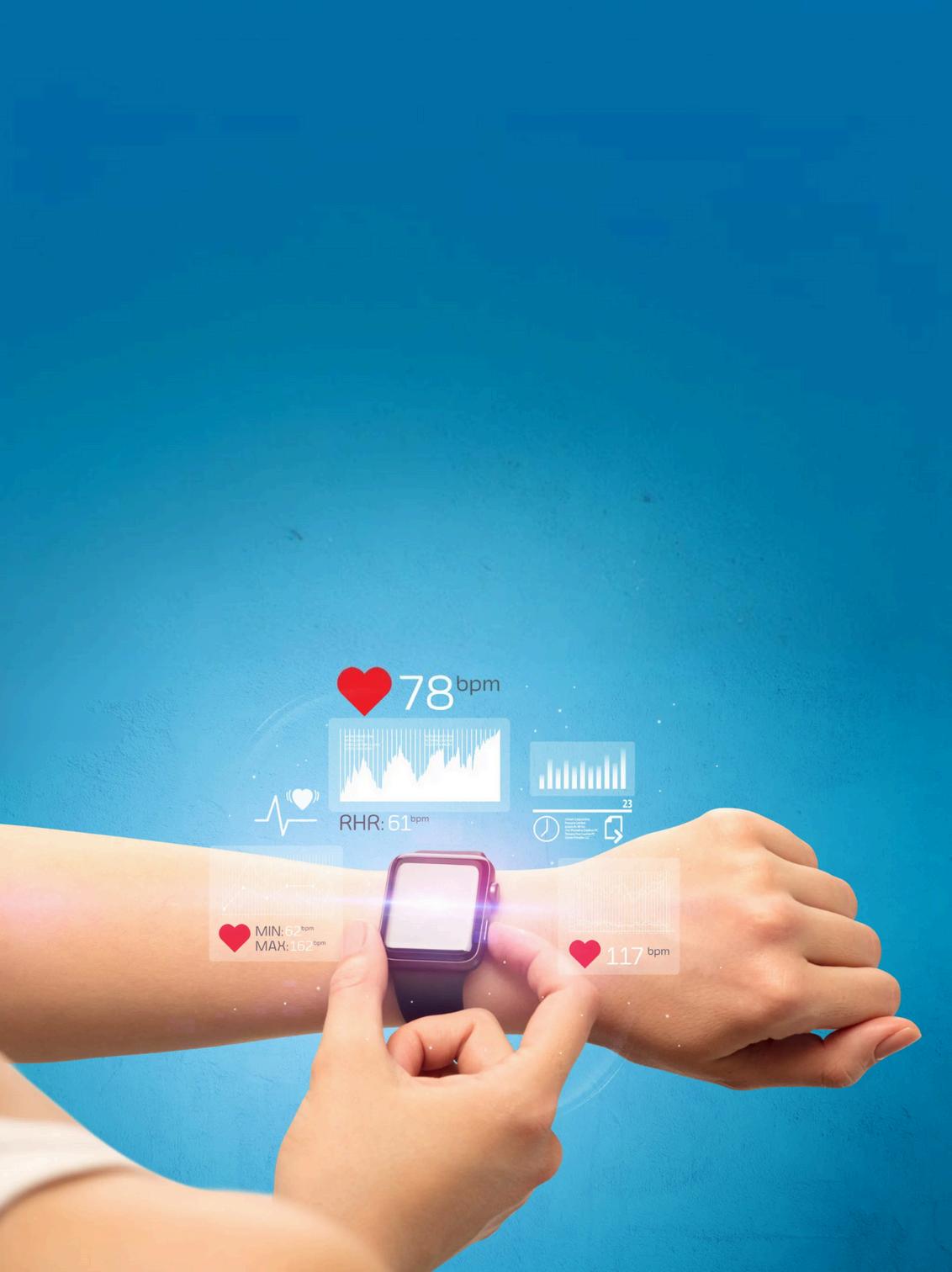
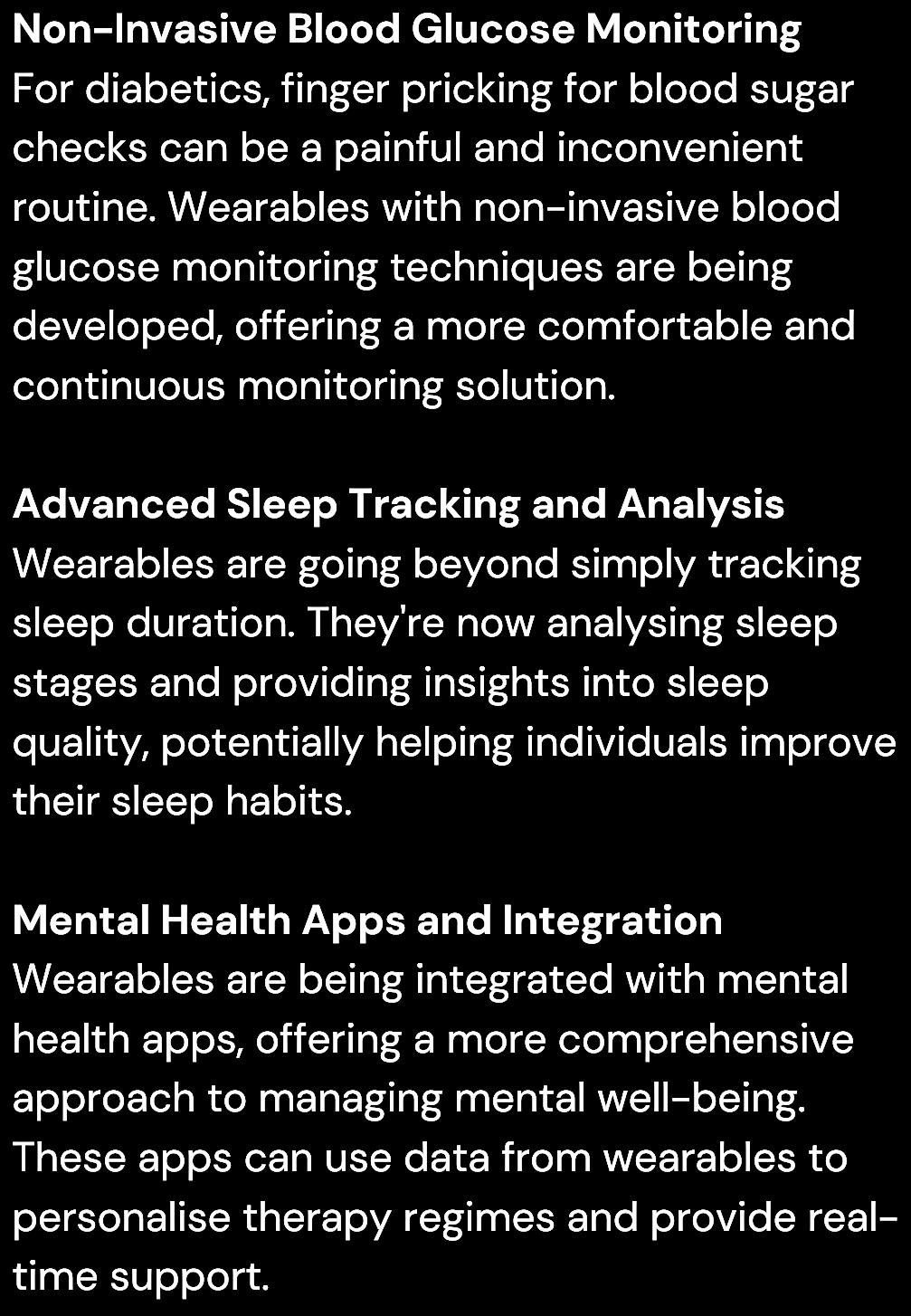


www CXOTechBOT com 47
ChallengestoLookOutfor
While wearable health tech offers a plethora of benefits, there are challenges to consider:
Data Privacy and Security
The massive amount of health data collected by wearables raises concerns about data privacy and security. Robust data security measures are crucial to ensure patient information remains protected.
Accuracy and Standardization
The accuracy of data collected by wearables can vary across devices. Standardisation is needed to ensure reliable and consistent data for effective patient monitoring
Accessibility and Cost
The cost of wearable health tech can be a barrier for some patients. Addressing affordability and ensuring accessibility is crucial for equitable healthcare
TheFutureofWearableHealth Technology
As technology advances at an astounding rate, the future of wearable health technology is brimming with opportunities. These gadgets, powered by continual innovation, are poised to change not only health monitoring but also chronic condition management, ultimately improving patient outcomes. Imagine a world in which wearables effortlessly blend into our daily lives, providing real-time insights into our health. Patients who are empowered by this data will take an active role in their healthcare journeys, collaborating with healthcare professionals to make educated decisions and personalise treatment programs This shift toward proactive health management, supported by wearables' ongoing feedback loop, holds the possibility of early detection of potential health issues, potentially averting complications and enhancing overall quality of life.
Furthermore, the capacity to remotely monitor patients via wearables can dramatically improve chronic illness management, allowing healthcare providers to give targeted support and prompt interventions as needed With continued developments, wearable health technology can bridge the gap between reactive and proactive healthcare, ushering in a new era of personalised and data-driven health management
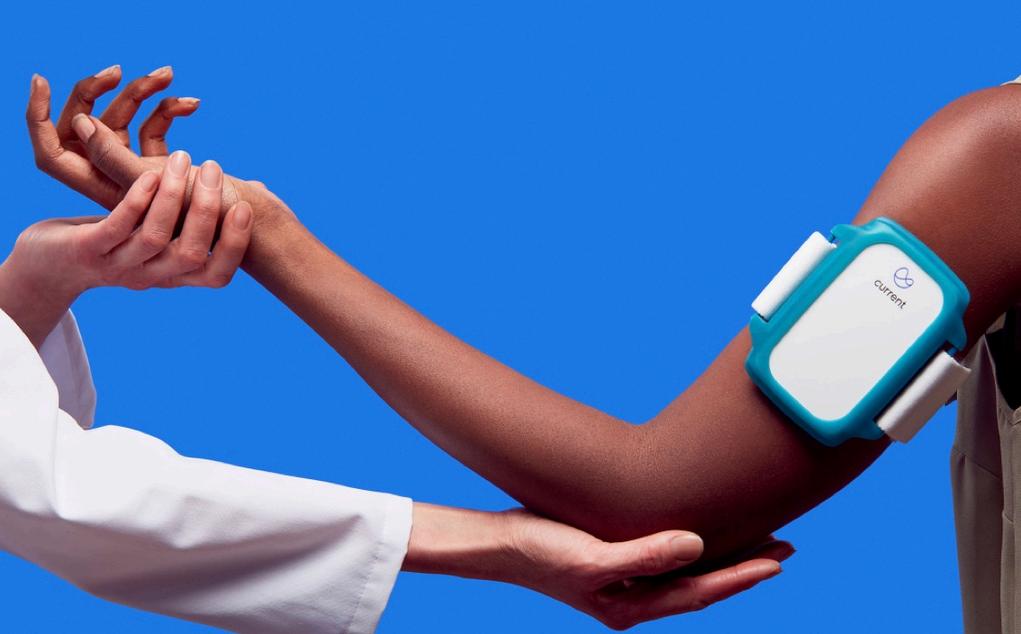
June 2024 48





From Concept to Reality The Journey of MedRabbits Healthcare in Delivering TechEnabled Home Healthcare Services www CXOTechBOT com 49
In recent years, home healthcare has emerged as a transformative concept in India, challenging traditional healthcare paradigms With a population exceeding 1 3 billion, India's healthcare infrastructure struggles to deliver accessible and affordable care to all its citizens Addressing this urgent need, MedRabbits is poised to bridge the gap between healthcare services and patients' homes. Employing a tech-first approach, the company tackles the scarcity of organized home healthcare options, creates structured job opportunities for healthcare workers, and enhances transparency in the market
Since inception, it has achieved operational profitability, and its revenue is doubling annually. The company completed the TiE Nurture Program 9.0 in May 2021, organized by TiE Pune, which further fueled its growth
The company has already conducted 10,000+ appointments and partnered with over 550+ nurses, attendants, physios, therapists, and doctors. MedRabbits Healthcare expanded its services into medical tourism, offering hasslefree travel arrangements, visa assistance, and personalized concierge service for patients seeking treatment in India.


MedRabbits Healthcare started with the aim of providing healthcare at home, allowing patients to receive care in a comfortable and familiar environment. The idea was born from the founders' personal experiences and the realization that there was a significant gap in home healthcare services The challenges faced during the illness of one founder's father in 2017 highlighted the need for reliable and structured home healthcare This led to the creation of MedRabbits, which integrates technology to deliver organized and compassionate healthcare services at home

Leveraging powerful algorithms and topnotch mobile technology, MedRabbits Healthcare provides integrated healthcare services at home like online doctor video consultation, home nurse, elderly care services, palliative care, high-quality ICU care, lab tests, medical equipment, and physiotherapy at home. Other popular services include dieticians, home-based care, ambulances, wheelchair taxis among others IdentifyingaGap:TheBirthof



MedRabbitsHealthcare’sInnovative Approach June 2024 50
MedRabbitsHealthcare
Supporting'HealinIndia':MedRabbits Healthcare’sContribution ExpandingHorizonsand StrengtheningGlobalReach
MedRabbits Healthcare has also ventured into medical tourism, aligning with the Indian government's 'Heal in India' initiative. This program aims to attract international patients to India for medical treatment It provides comprehensive medical tourism services, including support at the patient's hotel or lodging, ensuring a seamless experience. Their efforts have been well-received by international clients, especially from Bangladesh, Africa, and the Middle East Its Medical Tourism vertical offers:
Free Second Opinion Video Consultations
Streamlined Surgery Options with top hospitals in India, Far east and the Middle East
Hassle-free Travel Arrangements, including stay and transportation
Visa Assistance for seamless travel
Personalized Concierge Service for a comfortable healthcare journey
MedRabbits Healthcare offers a user-friendly web-based and mobile platform, allowing customers to conveniently book and pay for home healthcare services from anywhere, making it especially useful for those with elderly relatives in distant cities or NRIs unable to personally accompany patients. Listening to customer feedback and leveraging technology, the company quickly adapted to provide services like RT-PCR testing at home during the pandemic. With a focus on customer convenience, MedRabbits Healthcare introduced the Care Now, Pay Later (CNPL) model, allowing customers to pay for services in interest-free EMIs over 3-6 months. This unique feature eases the financial burden of upfront payments and is a first for home healthcare services in India
Looking ahead, MedRabbits Healthcare is poised for further expansion, both domestically and internationally With a strategic focus on strengthening its presence in current cities, the company aims to enhance accessibility to its innovative healthcare services for more individuals across the globe. In April 2024, the company launched its home healthcare services in Chennai, in addition to its already established services in Pune and Mumbai MedRabbits Healthcare also announced its services' launch in Bangladesh, demonstrating its commitment to improving healthcare access beyond Indian borders.
The company has recently forged partnerships with NRBC Bank, Dhaka Bank, AB Bank PLC, and Union Bank, Dhaka, offering exclusive benefits for medical value travel and other benefits These partnerships help streamline payments and offer financial solutions to patients coming to India for treatment This collaboration enhances the trust and convenience for international clients
MedRabbits Healthcare is an example of how innovation and compassion can transform the healthcare industry Their journey from a simple idea to a leading provider of home healthcare and medical tourism services is inspiring As they continue to push the boundaries of what is possible, MedRabbits Healthcare is paving the way for a new era in healthcare
www CXOTechBOT com 51
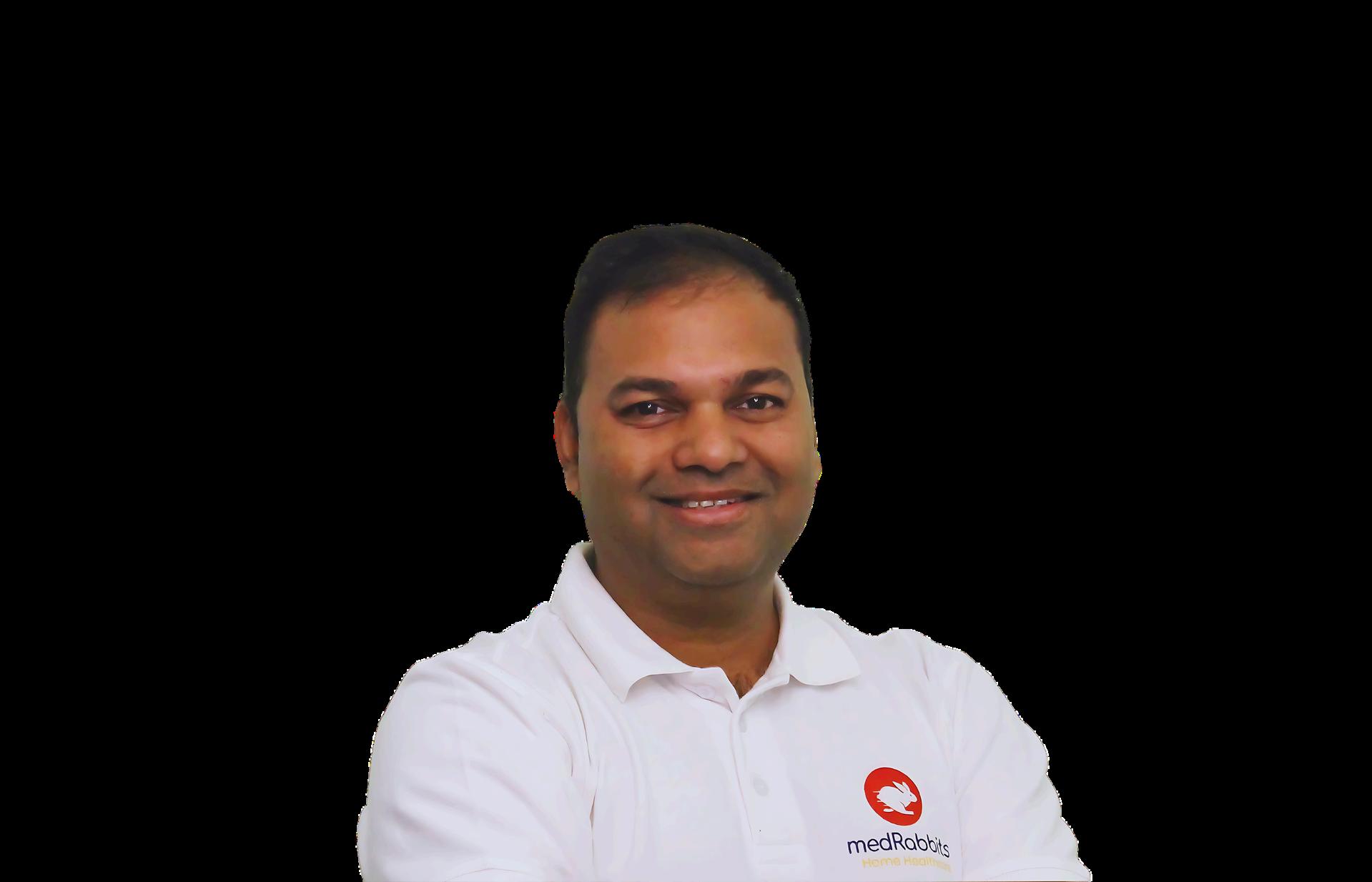

Amol R. Deshmukh
FounderandCEO,MedRabbitsHealthcare
Amol R Deshmukh is the Founder and CEO of MedRabbits Healthcare. He is responsible for the overall management, strategy and innovation of the company. He started his first business at the age of 12, a book library run over the school vacations with his friends After trying his hand twice at the start-up game, he recognized the importance of timing when it comes to product launch. MedRabbits Healthcare was incidentally launched a few months before the pandemic when the demand for at-home services surged
Amol is a proud Freemason and his lodge has helped build rural toilets, assist disaster-stricken areas and send underprivileged children to school He is happily married with two boys During his leisure time, Amol often plays golf, goes diving and engages in equestrian sports
June 2024 52
TheUnprecedentedSurgeof
ITinHealthcare
A Post-COVID Synopsis

In the wake of the COVID-19 pandemic, the healthcare sector witnessed an extraordinary integration of Information Technology (IT) This integration transformed service delivery and patient care The digital transformation, catalysed by necessity, has redefined the contours of medical practice and health management, making significant strides in efficiency, accessibility, and personalised care A statistic indicates that health services use increased by 7.3% in the last couple of years. This surge reflects a rebound from a sharp decrease in 2020 due to the pandemic, which had significantly disrupted routine and elective healthcare services .
AcceleratedAdoptionofTelemedicine

One of the most significant leaps in healthcare IT has been the exponential growth of telemedicine. Health systems worldwide have adopted remote consultations as a mainstay, facilitated by robust IT frameworks According to a report by McKinsey, telehealth utilisation has stabilised at levels 78 times higher than before the pandemic This surge describes the vital role of IT in expanding access to healthcare – it allows patients to receive timely medical advice without the risks of delayed in-person visits

www CXOTechBOT com 53
The post-COVID era has also seen a surge in the utilisation of big data and advanced analytics in healthcare. Hospitals and health systems are now leveraging these technologies to predict patient outcomes, streamline operations, and enhance decisionmaking processes For instance, artificial intelligence (AI) models are being employed to triage patients, predict surges in hospitalisation, and optimise treatment protocols Such applications not only improve operational efficiencies but also significantly boost patient outcomes.
RiseofWearableHealthTechnology
Wearable technologies have also seen a sharp increase in adoption Devices are now capable of monitoring a vast array of health metrics continuously Companies like Fitbit and Apple have reported substantial growth in the use of their health monitoring features. These devices play a crucial role in preventative health, early diagnosis, and chronic disease management, seamlessly integrating health monitoring into daily life.
Digitalhealthis reshapingthefuture.In fact,it’stransforming challengesinto opportunitiesfora smarter,more connectedhealthcare system.
BlockchainforHealthDataSecurity
Blockchain technology has emerged as a key player in ensuring data security and integrity in healthcare. With an increased emphasis on patient data privacy, blockchain provides a decentralised platform to securely store and share medical records. This technology ensures that patient data are immutable and traceable They significantly reduce the risks of data breaches and fraud.

The post-pandemic period has also witnessed unprecedented levels of investment in healthcare IT Venture capital funding for digital health reached a record high in the years following the pandemic. This demonstrates robust confidence in the sector's growth potential Innovators and startups continue to introduce breakthrough technologies in areas such as robotic surgery, virtual reality in rehabilitation, and personalised medicine through genomics.
EnhancedDataIntegrationand Analytics
InvestmentandInnovation June 2024 54
Value-BasedCareandSpecialty Practices
The shift towards value-based care is driving the emergence of specialised practices like cardiology and orthopaedics. Hospitals are centralising IT infrastructure to enhance care coordination and focusing on improving clinical outcomes This strategic emphasis aligns with growth initiatives aimed at expanding services and reaching more patients The overarching goal is to deliver high-quality care efficiently. It prioritises patient well-being while controlling costs
Amid the digital transformation in healthcare, there is growing concern about the negligence of health education and public health The rapid adoption of technologies like telemedicine, while beneficial during lockdowns, is perceived by some as a potential over-reliance on technology at the expense of traditional healthcare methods. This trend raises questions about the longterm sufficiency of technology to address the deficits in health infrastructure and manpower
TowardaFuture-ReadyHealthcare Ecosystem EmergenceofTechnology-Enabled Pharmacies
New technology-enabled pharmacies featuring direct-to-consumer models are rapidly emerging. These platforms offer digital prescription management, automated workflows, and faster home delivery services Although these new entrants currently hold a small market share, they are growing swiftly. This growth is fueled by significant private equity investments and it’s potentially leading to more innovation in pharmacy service delivery.
ChallengesinHealthEducationand PublicHealth

Despite challenges, the strides in healthcare IT in the post-COVID period represent beyond temporary adjustments it reflects a permanent transformation towards a more resilient, efficient, and patient-centred healthcare system This digital leap forward has the potential to bridge gaps in healthcare delivery, enhance patient engagement, and drastically reduce healthcare disparities. The continuous evolution of IT in healthcare promises a future where medical care is more accessible, data-driven, and aligned with the needs of each patient That said – a new age of medical excellence and innovation is knocking the doors!
www CXOTechBOT com 55

Mohi
GeneralMan Institute&A
Mohit Tandon is eral Manager of Information Tec . With a robust background in h alysis, Mohit has honed his exper n Hospital and Sir Ganga Ram H esses, and delivering comp care and Fortis Healthcare furth d ensuring seamless operat d meticulous approach signifi

June 2024 56


Insights from an Industry Titan
Awave of technological innovation is transforming the healthcare landscape From virtual consultations to instant access to medical records, cuttingedge advancements are reshaping healthcare management, delivery, and patient care This digital revolution is not confined to practical applications but also delves into research and development, where powerful artificial intelligence tools including even more advanced forms like quantum AI (QAI) are accelerating training processes and enabling the rapid creation of diagnostic models

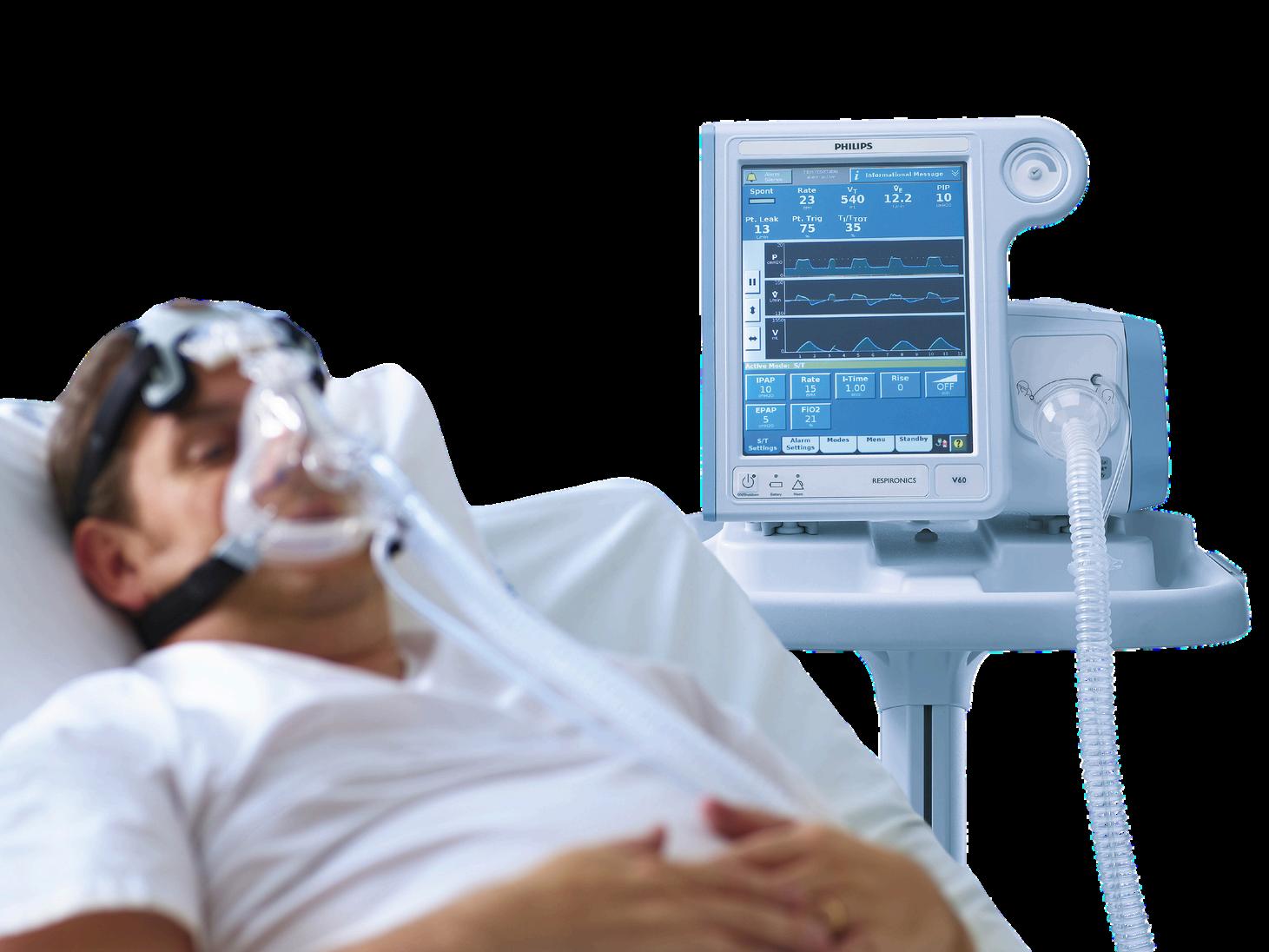
TransformingPatientCareThroughTechnology
www CXOTechBOT com 57
ImprovingHealthcareThrough Patient-DrivenDigitalSolutions
The recent surge in patient-centred digital technologies has reinvented healthcare. Mobile apps and wearable devices like smartwatches empower patients to actively care for their well-being. Real-time health monitoring, regardless of location or time, puts information regarding their vital signs at their fingertips This technological innovation also extends to healthcare providers, who can leverage digital solutions for remote patient monitoring, fostering patient engagement and reducing the need for on-site visits, leading to improved health outcomes.
Electronic Health Records: Enabling Care and Collaboration
Electronic Health Records (EHRs) have laid the foundation for modern healthcare, fundamentally transforming patient care. These digital repositories consolidate patients’ medical history, streamlining access for healthcare professionals. Digitising healthcare records also fosters uninterrupted communication between providers It revolutionises healthcare collaboration by facilitating the electronic sharing of patients’ complete medical data, including reports, medications, and results, ensuring all providers have accurate information to create treatment plans and deliver optimal care Furthermore, EHRs leverage automation tools to assist in diagnosis, minimising the risk of human error.
Telemedicine: Connecting Healthcare Providers and Patients
Telemedicine has become a cornerstone of present-day healthcare, connecting patients and providers, especially in geographically limited areas This innovative technology facilitates virtual consultations and visits, allowing both patients and doctors to communicate remotely, reducing travel and waiting times While telemedicine proves particularly efficient for patients in remote locations, its convenience extends far beyond 55% of patients claim that virtual visits are more satisfactory than traditional in-person appointments.
UmeshParasher
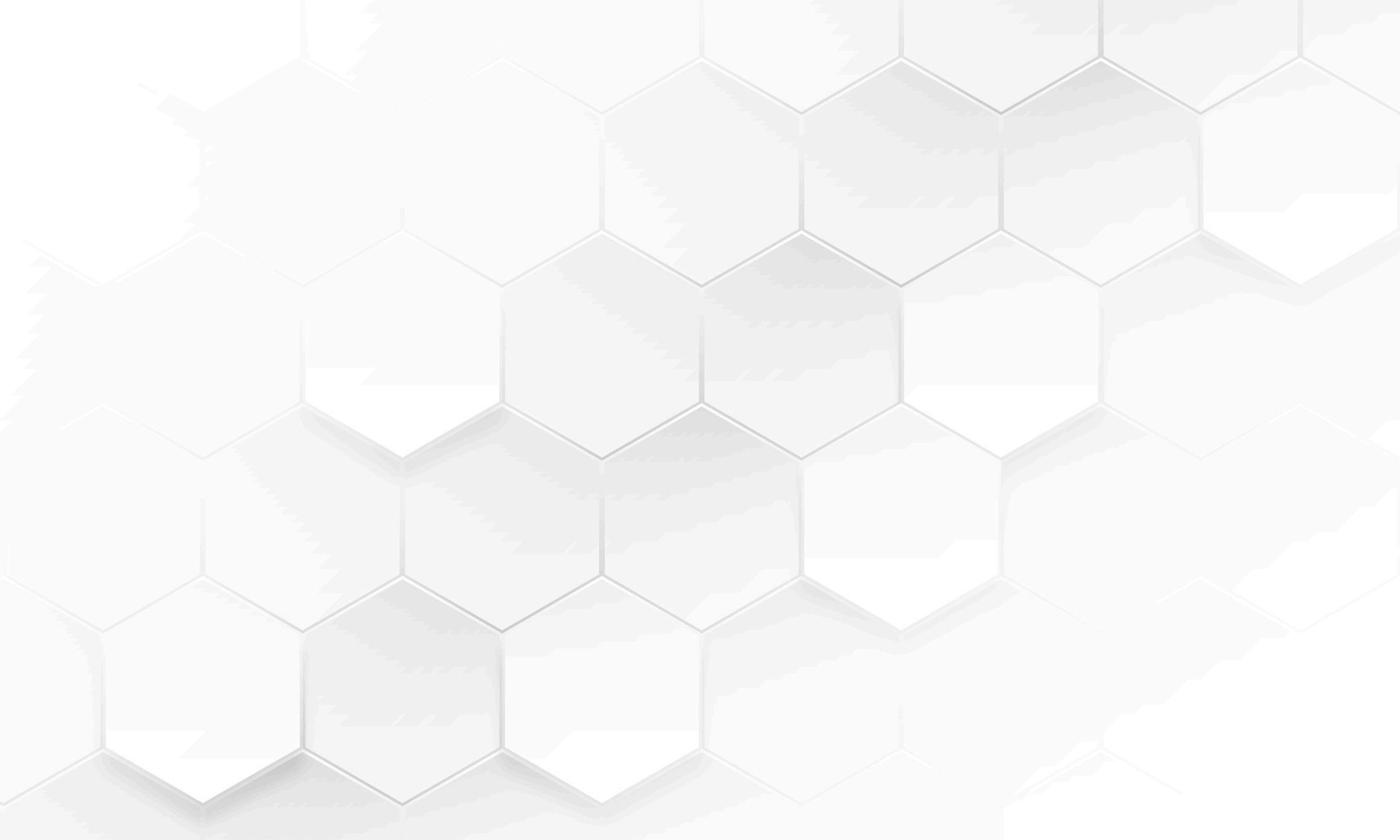
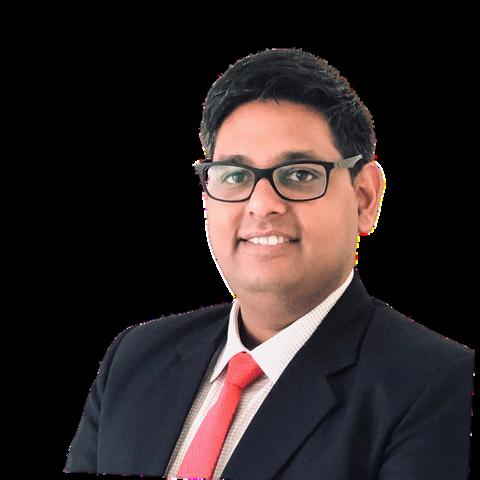
isinexplicably intertwinedwith technology.Harnessing thepowerofinnovation unlocksthegatewayto buildingahealthcare systemwheretreatment isbettercoordinated andpatientscan experienceasystem centredaroundtheir needsandwell-being. June 2024 58
Thefutureofhealthcare
Understanding and Decoding Patient Data with Big Data
Counting modern healthcare’s achievements in enhancing patient care would be incomplete without acknowledging the transformative power of big data and healthcare analytics. Combining big data and analytics has reshaped how insights are extracted from vast datasets By analysing patient data for patterns and trends, healthcare providers can proactively identify potential risks, predict future health challenges, and tailor treatment plans for improved patient outcomes. Integrated analytics tools also enable healthcare professionals to make data-driven decisions, leading to more precise and accurate diagnoses and reports.
Artificial Intelligence and Machine Learning: The Pillars of Better Patient Outcomes
Artificial intelligence (AI) and machine learning (ML) are transforming healthcare by empowering doctors with intelligent tools to assess and study vast troves of patient data. These powerful algorithms not only identify patterns and improve decision-making in
clinical environments but also assist with lab tests and medical imaging. This allows for earlier detection of health conditions, leading to significantly enhanced patient care
Moreover, AI and ML considerably reduce healthcare costs by intervening and devising treatment plans at the initial stages
Researchers also estimate that AI adoption could reduce healthcare spending by 5-10%.
HeadingTowardsaBetterFuturewith
Embracing technology in healthcare spaces opens doors to patient empowerment, broadening the scope of healthcare delivery and services and significantly improving patient care outcomes. However, while technology has made remarkable strides in the landscape, addressing and combating challenges, such as data privacy and security and the ethical ramifications of using AI, is critical Despite these challenges, in the long run, harnessing and leveraging digital innovations like wearables, big data, EHRs, and AI can pave the way for a more inclusive and connected future where healthcare is patientcentred and more accessible for all.

www CXOTechBOT com 59
DigitalHealthcare


Umesh Parasher
GeneralManager,MHEA
Mr Umesh Parasher is a seasoned technology leader who has transformed and driven innovation in the Indian healthcare industry for over 20 years With expertise in project management, platform design, software development, and implementation and support, his offerings to the healthcare landscape have been revolutionary.
Mr Parasher’s telehealth prowess is evident in the way he has empowered hospitals by implementing hospital information systems and EMR platforms, as well as finance and ERP solutions, such as SAP, CRM, and lead management systems. Before stepping into the role as the General Manager MHEA of MyHealthcare Technologies, Mr Umesh Parasher made waves in renowned hospital networks, such as Apollo Hospitals, Artemis Healthcare, Max Healthcare, Medanta Hospital, and Paras Hospital
In addition to empowering regional hospitals, Mr Parasher’s career trajectory also includes partnering with leading industry giants like Dell International Healthcare and DXC Technologies, a global healthcare technology leader. He is a driving force in the health tech industry, making the space more inclusive and accessible for healthcare professionals and devising ways to focus on cost optimisations and quality deliverables through automation and digital transformation, brightening the future of patient care in India.
June 2024 60
EnhancingScientific Communication
AI Solutions for Efficient Medical Writing and Publication
Scientific publications hold immense importance for healthcare professionals and pharmaceutical companies alike. For a healthcare professional, publishing research findings signifies a contribution to the advancement of medical knowledge, enhancing their credibility and reputation within the medical community. It also serves as a platform to share insights and innovations, ultimately benefiting patient care. Similarly, for pharmaceutical companies, publication of research outcomes validates the efficacy and safety of their products, contributing to scientific discourse and supporting regulatory submissions It also reinforces their position as leaders in the field and builds trust among stakeholders

However, the burgeoning volume of scientific data poses a significant challenge for medical writers, who must navigate this sea of information with precision and artistry. Translating intricate research findings into clear, concise, and publishable documents requires a meticulous balance of adhering to stringent deadlines, maintaining scientific rigor, and complying with rigorous journal guidelines. The intense pressure faced by medical writers often leads to writer burnout and delays in publication The advent of advanced AI tools offers a promising solution to these challenges, poised to revolutionize efficiency and accuracy within this crucial domain
www CXOTechBOT com 61
ChallengesinTraditionalMedical WritingandPublicationPlanning
Medical writers face a unique set of interconnected challenges that significantly impact both productivity and quality. The constant pressure of meeting manuscript deadlines necessitates rapid data analysis, writing, and editing, often resulting in writer's block. Additionally, ensuring scientific rigor requires meticulous attention to detail, while the need to communicate effectively with a global audience demands proficiency in medical terminology Interpreting the nuances of data further underscores the importance of human expertise. Amidst these demands, staying updated with the latest advancements in medical writing tools is crucial to maintaining efficiency and accuracy in this ever-evolving field.
ThePowerofCollaboration:Manand MachineinHarmony
Advanced AI tools provide a suite of functionalities that significantly empower medical writers by automating repetitive tasks while writing a manuscript including literature reviews, data extraction, citation formatting, and so on This automation liberates time for writers to concentrate on critical aspects like interpretation, and the crafting of compelling narratives Furthermore, algorithms ensure strict adherence to journal guidelines, minimizing errors and delays Together, these advanced tools streamline the writing process, ensuring both efficiency and precision
BenefitsforAllStakeholders
Adopting advanced tools offers numerous advantages for all stakeholders in medical writing and publication Automation accelerates manuscript preparation and submission, leading to faster publication timelines. Streamlined writing and editing processes reduce costs, while consistent formatting and minimized errors enhance the quality of publications Advanced data visualization tools further enhance the reader's understanding, presenting research findings in a clear and impactful manner Moreover, the collaboration between medical writers and researchers or pharmaceutical companies is strengthened by these tools. The seamless integration of AI tools allows for a more efficient exchange of ideas and information, fostering a collaborative environment. Writers can work closely with researchers or industry professionals to interpret data and craft compelling narratives.
Despite its potential, the integration of AI in medical writing raises significant ethical considerations, including data privacy. Ensuring transparency in the utilization of AI tools and providing clear explanations of their decision-making processes are imperative to maintain trust and uphold privacy standards. Human expertise remains indispensable for critical analysis, interpretation, and editorial judgment Striking a balance between AIdriven efficiency and human understanding is pivotal for the future of medical writing, ensuring ethical practices and respecting data privacy EthicalConsiderationsandFutureof

AIinMedicalWriting June 2024 62

AGlimpseintotheFuture
In the near future, researchers could utilize AIpowered medical writing assistants as copilots to seamlessly generate the discussion section of original research papers These AI assistants may have the capability to bring the best supportive references as per the research findings, incorporating precise findings and clear explanations into the discussion Moreover, these AI assistants could analyze data, propose potential visualizations, and assist in varied data analysis and interpretations, potentially saving valuable time for the writer This potential scenario highlights how AI has the potential to revolutionize medical writing, ushering in a new era of efficiency, accuracy, and scientific advancement.
In a nutshell…
The future of medical writing is poised at an exciting juncture where technology, particularly advanced AI tools, is set to redefine the landscape. As we move forward, the collaboration between human expertise and AIdriven efficiency will be pivotal in shaping the future of medical writing. With a focus on transparency, ethical practices, and data privacy, the integration of AI as a co-pilot in medical writing holds immense potential to revolutionize efficiency, accuracy, and scientific advancement. This synergy between human ingenuity and technological innovation promises a brighter future for medical writing, where publications not only meet high standards but also contribute significantly to scientific discourse and advancements in healthcare.
Itiscrucialtoremember thatAIisatool,and humanexpertise remainsessentialin interpretingtheresults, ensuringaccuracy,and maintainingethical standards.Thesynergy betweenAIandhuman intelligenceholdsthe keytoadvancing medicalknowledgeand improvingpatient outcomes
Dr.AmitDang
www CXOTechBOT com 63

Dr. Amit Dang
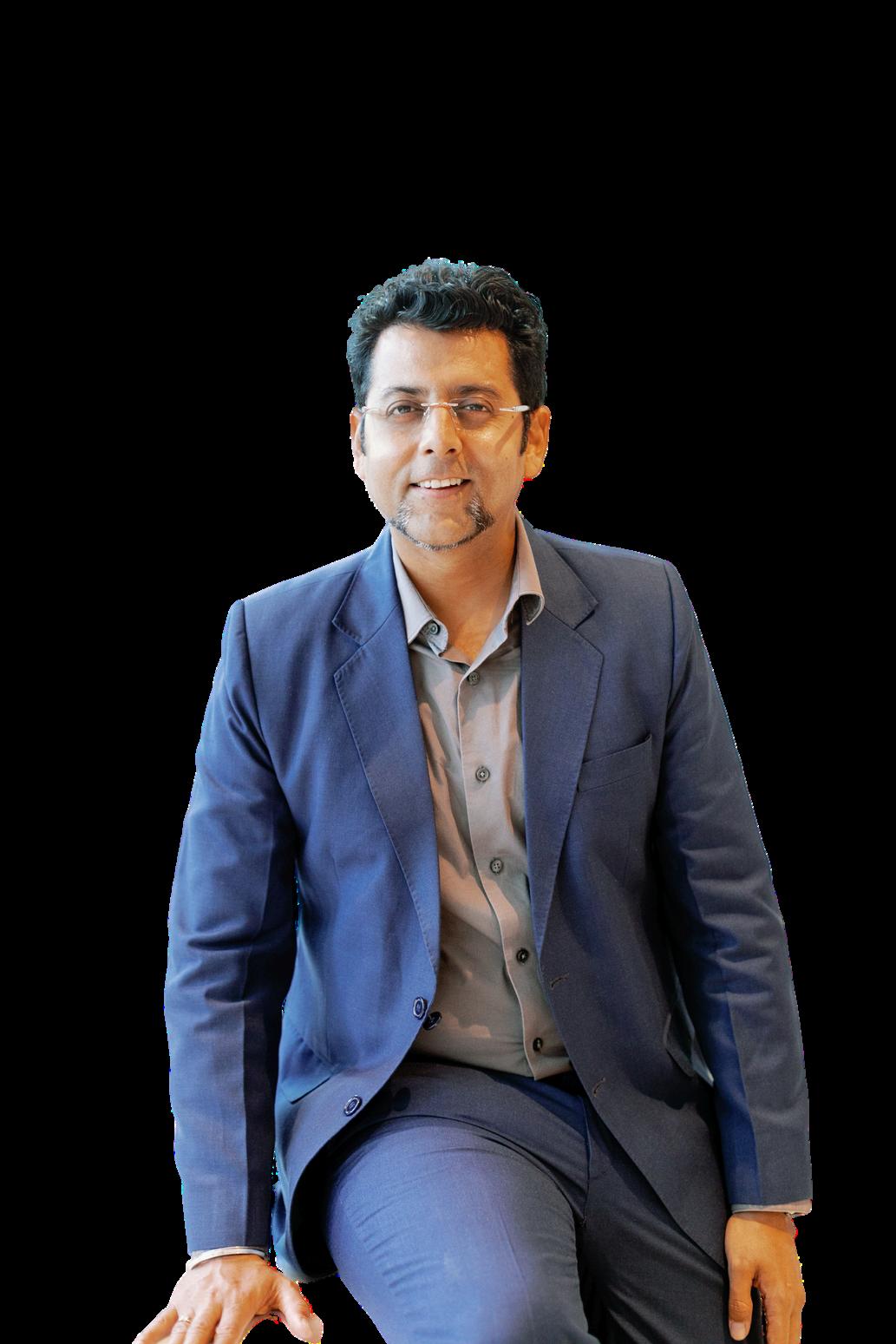
Dr Amit Dang is a distinguished leader in Health Economics and Outcomes Research (HEOR), with over thirteen years of experience in the pharmaceutical industry. At MarksMan Healthcare, a global consulting firm, he utilizes his extensive expertise to empower life science companies through HEOR, Real World Evidence (RWE), and Medical Affairs support Dr Dang is also dedicated to cultivating the next generation of HEOR professionals. As the course director at the MarksMan Academy of Health Sciences (MAHS), he spearheads online certification programs for students, researchers, and healthcare practitioners Additionally, he facilitates knowledge exchange within the medical affairs community through the Indian Medical Affairs Summit (INMAS), a platform for industry professionals to learn, share best practices, and collaborate. His commitment to the field is further demonstrated by his prolific publication record, with over 100 peer-reviewed articles and posters, and numerous awards recognizing his academic and professional excellence
FounderandCEO@MarksManHealthcare June 2024 64
GeneEditing
Revolutionising Medicine But Raising Ethical Questions




CRISPR www CXOTechBOT com 65

ABriefHistoryofGeneEditing

ConceptsofCRISPRGeneEditing





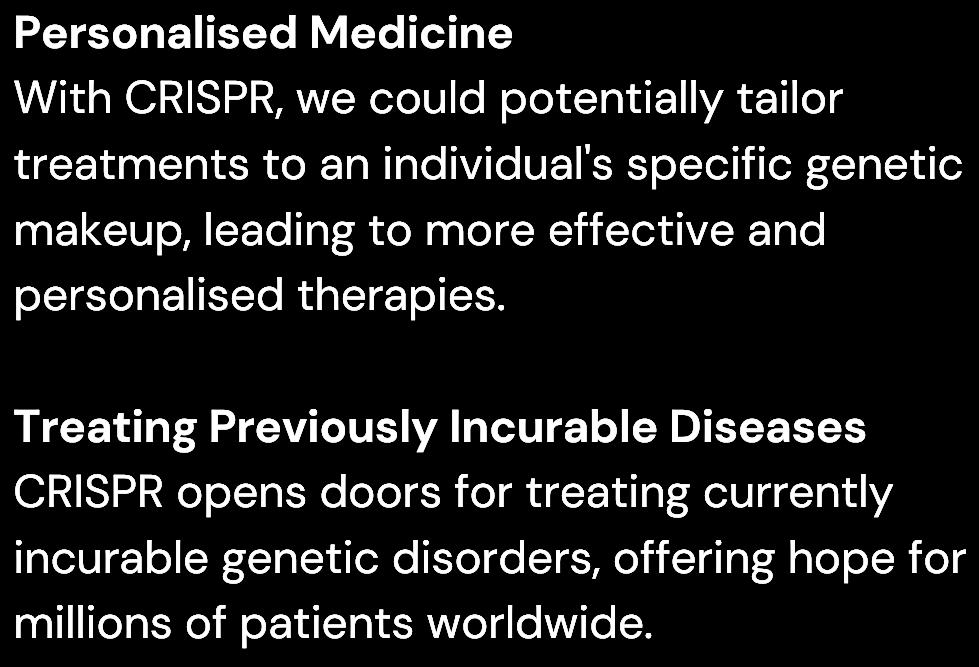
ApplicationsofCRISPRinMedicine andHealthcare
June 2024 66


Final Thoughts
CRISPR gene editing stands at a crossroads. With careful consideration of the ethical landscape, responsible development, and open dialogue, the future of wearable health gadgets holds immense promise As technology continues to advance and adoption rates increase, these cutting-edge innovations have the potential to revolutionise patient monitoring, empowering individuals to take control of their health and enabling healthcare professionals to provide more personalised, proactive, and effective care.
www CXOTechBOT com 67
EthicalConcerns
The Future is Now Exploring Cutting-Edge Uses of 3D Printing in Healthcare
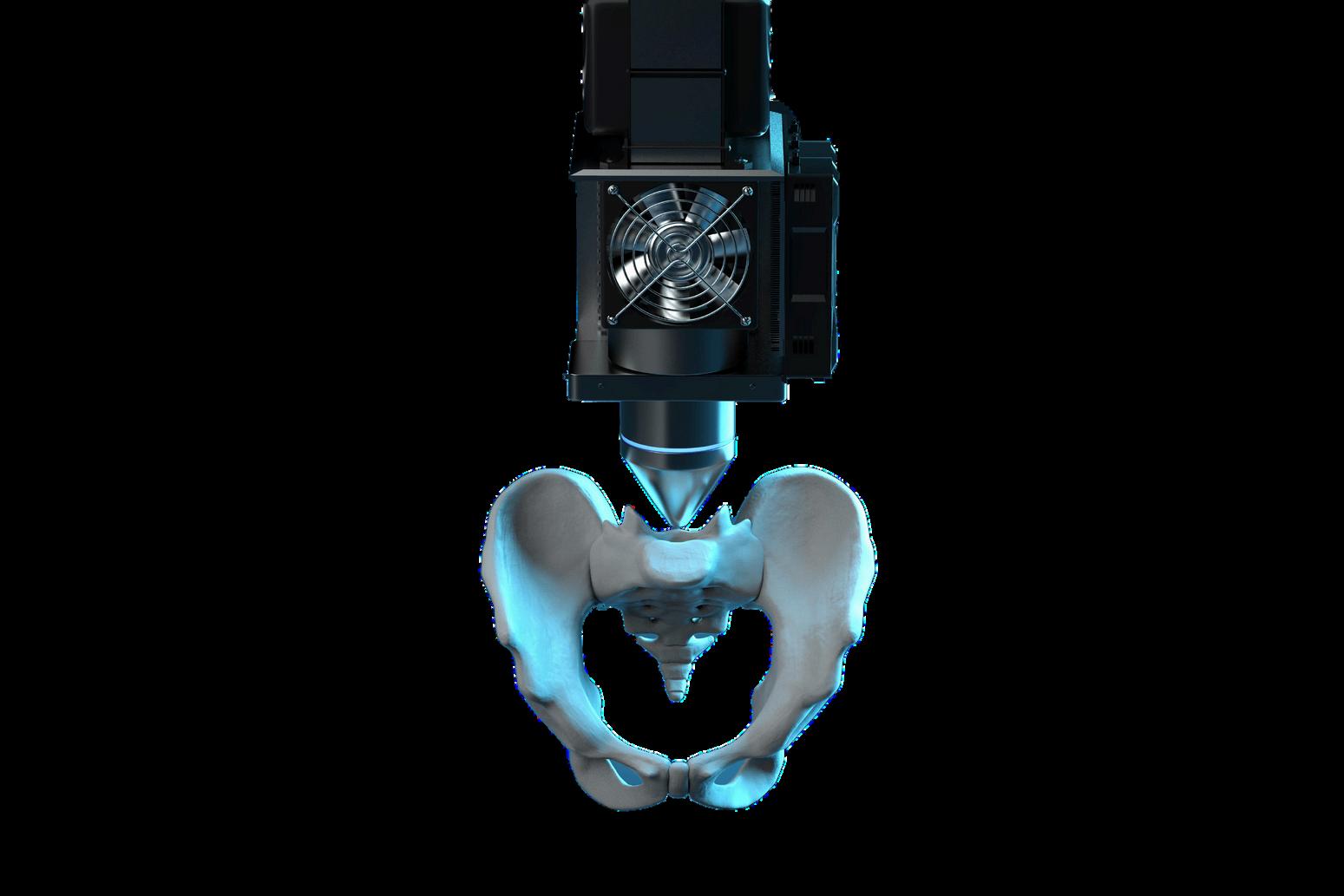
The introduction of 3D printing technology has emerged as a disruptive force in the medical area, opening up considerable prospects for pharmaceutical and medical corporations in drug research, rapid production of medical implants, and planning surgical procedures.
A survey estimates the market size at US$2 8 billion in 2022 and expects that it will reach US$11 billion by 2032, with a CAGR of 16.6 per cent.
June 2024 68
TheProcessOf3DPrintingFor Healthcare
Three-dimensional (3D) printing, also known as additive manufacturing, has emerged as a significant technology in the healthcare field since its inception in the 1980s This technology offers a versatile approach, facilitating the production of educational materials, prostheses, and surgical planning models
Advancements in bioprinting hold promise for the creation of functional organs Various methodologies exist within the realm of 3D printing for healthcare applications. However, these methods typically follow a common workflow: model conceptualisation, conversion of the model into a standard triangle language (STL) file, subsequent conversion to G-code (machine instructions), and finally, printing and post-processing of the printed object Notably, 3D printers can utilise a diverse range of materials, including plastics, biodegradable materials, powders, liquids, and even living cells.
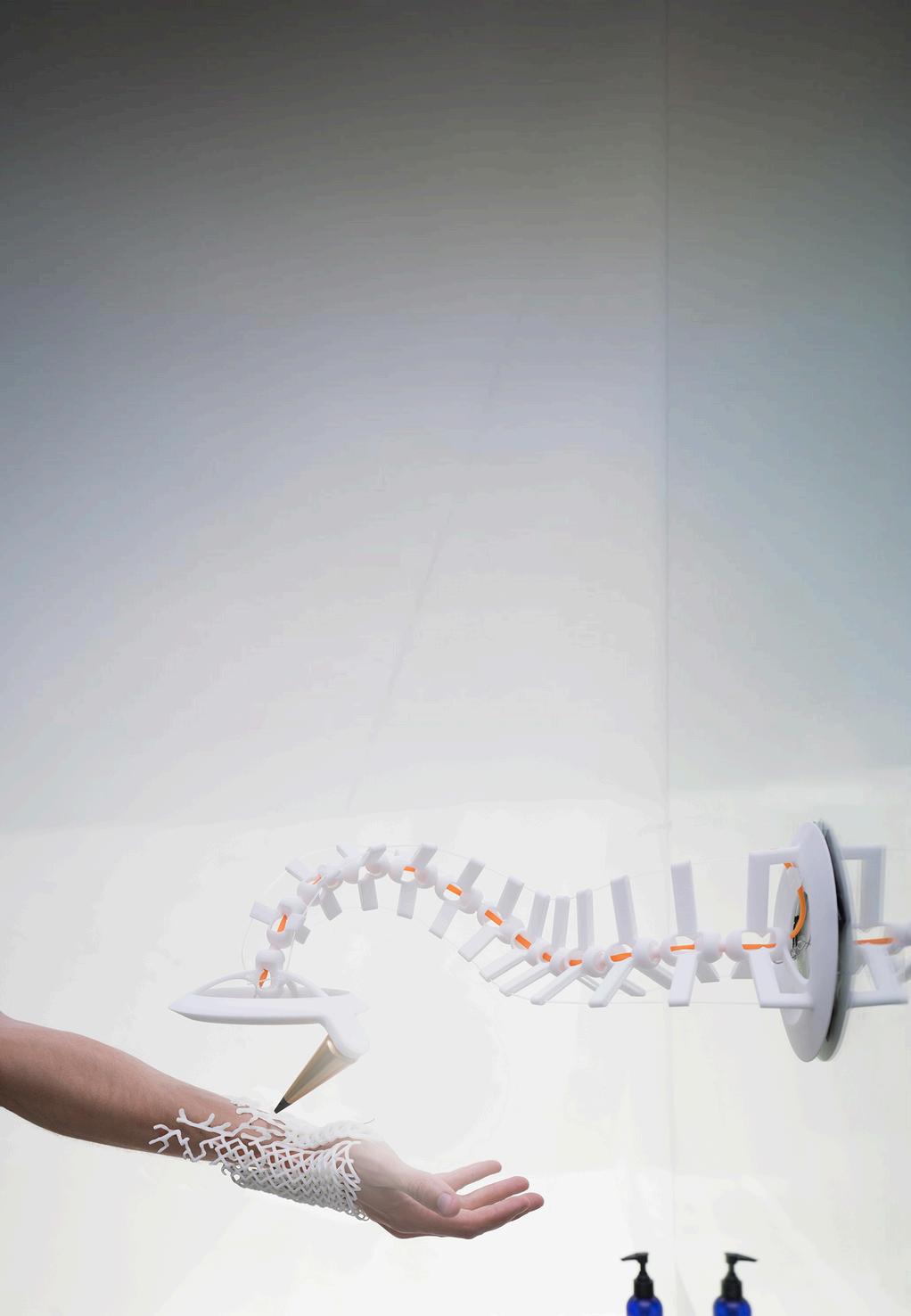
Present-dayApplicationsof3D PrintinginHealthcareandMedicine
Personalized Medical Devices
Custom implants and prosthetics are designed for optimal fit and function, resulting in better patient results and comfort
Bioprinting holds the potential to create individualised tissues and organs, changing treatment for a variety of illnesses
Enhanced Surgical Planning
Patient-specific anatomical models simplify pre-surgical planning, resulting in shorter operating times and lower risks.
According to a 2023 poll, about 95% of surgeons believe that 3D-printed models are useful therapeutic aids for presurgical planning
Advanced Education & Training
Surgeons practise on realistic, patientspecific models created from scans, which improves surgical planning and lowers risks. Medical students have hands-on experience with detailed anatomy models, which helps them understand and prepare for real-world situations
www CXOTechBOT com 69
ALookatEmergingTrendsin3D Printing
Advanced Bioprinting
Advanced bioprinting is a growing technology in healthcare that uses biocompatible materials and even living cells to create functional tissues and organs. This has enormous implications for customised treatment, including the development of bioprinted devices and, potentially, organs for future transplantation.
Personalised Medicine
3D printing enables the fabrication of personalised medication tablets with exact doses and release rates Bioprinting has the potential to revolutionise therapy by producing patient-specific implants and prosthetics that improve fit and function
AI Integration
Machine learning optimises designs for 3Dprinted implants and devices, improving performance and biocompatibility. AI can also help with surgical planning by incorporating patient data to ensure tailored operations and optimal implant placement.
ChallengesofUtilising3DPrintingin Healthcare
Biocompatible Materials
Developing biocompatible materials, especially for complex tissues and organs, remains a significant challenge for 3D printing in healthcare.
Vascular Networks
Overcoming technical limitations to establish functional vascular networks within bioprinted constructs is crucial for their longterm viability.
Regulatory Framework
The regulatory landscape must adapt to ensure the safety and efficacy of 3D-printed medical devices.
Cost-Effectiveness Analysis
A detailed cost-effectiveness analysis is necessary to determine the optimal integration of 3D printing into existing healthcare systems.
Conclusion
Despite significant advancements in 3D printing technology, the supply of final medical products remains restricted. A significant aspect of overcoming this barrier is improving our understanding and skills in the long-term development of pharmaceutical and medical products using 3D printing This needs to focus on selecting the best processes and materials to ensure the development of safe, effective, ethical, and environmentally friendly medical solutions.


June 2024 70
Next-Gen SeniorCare
Exploring the Power of Generative AI and Large Language Models
The United Nations predicts that the global population aged 65 and up will reach 1 5 billion by 2050 A growing consensus suggests that the demand for AIpowered healthcare services is rising in tandem with ageing populations in industrialised nations
The increasing number of patients outpaces the growth of the healthcare workforce, necessitating more efficient and innovative models of care.

www CXOTechBOT com 71
FrameworkOfGenerativeAIandLLMs
Large language models, or LLMs, are the critical enablers behind generative AI. They can take a user ' s text instructions and churn out entirely new content, from words and pictures to music and even code
LLMs empower a unique user experience in generative AI Users interact with the application through prompts, which can range from concise, natural-language instructions to detailed technical specifications. These prompts guide the LLM in generating the desired output, be it text, code, images, or other media formats Prompts can be iterative, allowing for further refinement as the user interacts with the system.
Leveraging complementary algorithms, LLMs generate near-instantaneous responses to user prompts. These responses, particularly in text-to-text transformations, exhibit a high degree of human parity. This is evident in factors such as style, grammar, presentation, and often even content Several prominent LLM applications exist, including OpenAI's ChatGPT, Google's LaMDA and Bard, Stability AI's Stable Diffusion, and OpenAI's Dall-E image generator
SignificanceofGenerativeAIand LLmsinHealthcareForSeniors
BioGPT, a Microsoft-developed LLM trained in biomedical data, has achieved human parity in certain biomedical text production and mining tasks Similar results have been reported for other cutting-edge LLMs on standardised law and education assessments. This capability, combined with the conversational comfort of
human-machine contact and the seemingly endless range of prompt complexity and variety that LLMs can manage, is a remarkable accomplishment.
While there are fewer in-use applications in the sector of senior healthcare yet, the potential benefits are significant. Some of them are listed below:
Personalised Education
Generative AI helps create educational materials tailored to each senior's specific needs, learning style, and existing health conditions This ensures optimal knowledge retention and engagement
AI Companionship Chatbots
Programmers can develop AI companions that can engage in human-like conversations, offering emotional support and addressing basic healthcare inquiries This fosters social interaction and a sense of well-being for seniors.

June 2024 72

According to an AARP survey from 2023, only 29% of seniors 50 and older felt very or somewhat comfortable using voice-activated technologies.
Medication Adherence Reminders:
With the help of Generative AI and Large Language Models(LLMs), one can create personalised medication adherence reminders that adapt to a senior's individual preferences and cognitive abilities. This promotes improved medication management and overall health outcomes
Data-Driven Risk Analysis:
AI can help leverage large-scale healthcare data analysis to identify trends, predict potential health risks for seniors, and enable proactive interventions and preventative measures.
PotentialRisksandChallenges
Digital Security
Stringent safeguards are necessary to ensure the protection of sensitive healthcare data utilised by AI systems.
User Experience
Intuitive and age-friendly interfaces are crucial to foster senior adoption of these technologies
Cost-Benefit Analysis
A balanced approach is required to evaluate the investment in AI solutions against the potential benefits for senior care.
Ethical bias
Mitigating bias in AI algorithms is essential to guaranteeing equitable care delivery for all seniors
Conclusion
Unchecked generative AI applications pose a significant risk of spreading misinformation. However, responsible development and human monitoring can transform them into strong, trustworthy information management tools, supplementing, not replacing, human decisionmaking.
The application of AI in healthcare is continually evolving. New research and pilot programs are emerging, perhaps paving the way for future possibilities.
www CXOTechBOT com 73























































































































 BrijendraSingh
BrijendraSingh



































































